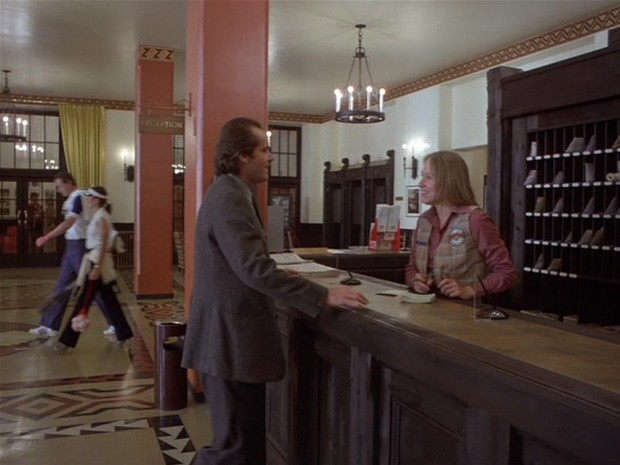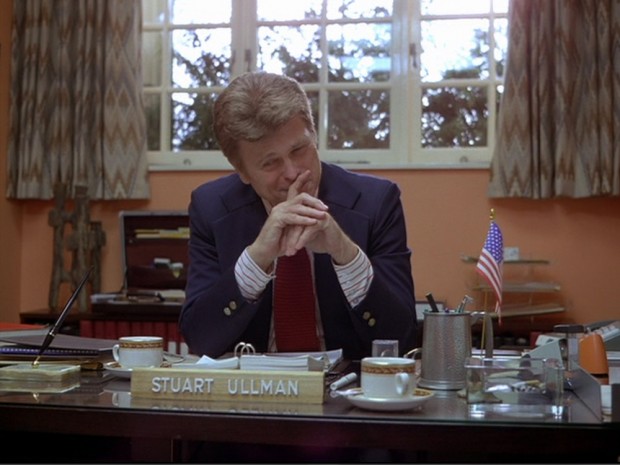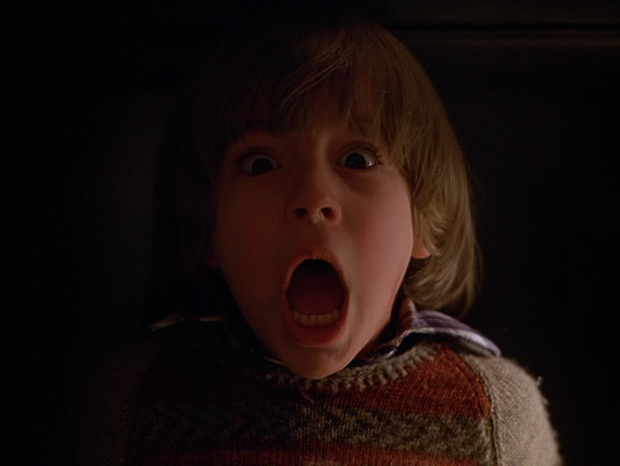STANLEY KUBRICK'S THE SHINING

Go to TOC for this film ( (which has also a statement on purpose and manner of analysis and a disclaimer as to caveat emptor and my knowing anything authoritatively, which I do not, but I do try to not know earnestly, with some discretion, and considerable thought).
THE INTERVIEW
In which we learn how screwed up the Torrance family is and root for their going to the Overlook for the winter where the pressure cooker will explode. "Go! Go!" Because audiences are cruel
TOC and Supplemental Posts | Part 1 - The First Ascent | Part 2 - The Interview | Part 3 - Closing Day |
Part 4 - A Month Later | Part 5 - Tuesday | Part 6 - Thursday | Part 7 - Saturday | Part 8 - Monday |
Part 9 - Wednesday Part One | Part 10 - Wednesday Part Two | Part 11 - 8 AM | Part 12 - 4 PM |
Films Home
LINKS TO SECTIONS OF THE ANALYSIS ON THIS PAGE:
Jack Arrives at the Overlook, Shots 9 through 11
The lobby, its influences, and the dissociation of the lodge's interior from its exterior. How a set informs the story in all its particulars.
A Note on 8 and 1/2
Our first acquaintance with the Gold Room hall and the maze. How flow of action about the set unconsciously constructs for the audience a plot of the unseen environment based on natural expectations.
Foreshadowing, Jack crosses the circle where Dick will later lie slain. How ambient audio unconsciously constructs and complements environment.
The Impossible Window. On the art.
Lunch with Danny, Wendy, Tony, The Catcher in the Rye, and the Kensington, Shots 12 through 20
About the cartoon...
Comin' Through the Rye
Ullman and Watson Interview Jack, Shots 21 through 49
Introducing Bill Watson, a man with precious few words on the situation. The Overlook's sad history related.
The Story of the Winter of 1970
The Two Types of Photographs in the Hotel
Notes on Ullman's Desk and Inconsistencies
Notes on the Timings of the "Sha" Sounds
Danny's First Shining of the Girls and the Bloody Elevator, Shots 50 through 60
The Rainbow in Danny's Room and His Black-out Compared to A Clockwork Orange and the Invitation to the End of the Rainbow in Eyes Wide Shut
The Awakening of Jacob
42
Carson City
The Fox Terrier and the Horse
The Second Interview, Shots 61 through 95
Susan Sontag's Illness as Metaphor. Young Jethro and the Maze. The Works of Ina Seidel and the Third Reich.
On the Two Union or Liberty Suits and the Two Necklaces
In Review, What Has Kubrick Given Us in This Section?
What's the teaser candy bait?
What's the distraction?
The itch that bess to be scratched?
What's the secondary teaser candy bait?
What's the deep infrastructure?
JACK ARRIVES AT THE OVERLOOK
THE LOBBY, ITS INFLUENCES, AND THE DISSOCIATION OF THE LODGE'S INTERIOR FROM ITS EXTERIOR - HOW A SET INFORMS THE STORY IN ALL ITS PARTICULARS
9. Title card: The Interview. (3:02)
The opening was nature. Now? Humans tend to not think of themselves as part of nature. Instead they are in opposition to it, and, at best, sometimes enjoy its pleasanter, friendlier aspects. This is one of the things that the Interview makes a focus, the battle of humans and the lodge against nature.
10 Tracking shot of Jack through the lobby. (3:05)
We open with the lobby. There is no music, only the ambient sounds of general activity.
At no time until near the film's end do we, from the interior of the Overlook, directly observe characters exiting or entering the lodge, and never from the lobby. Not even now. We see characters going to the doors to exit, and entering from the direction of the main doors, but never do we see them actually going in and out of them. Jack has already just entered the lodge as the scene opens, we do not see him come up to the lodge from his car, as another director might have chosen to show. We assume Jack has made the trip up in the yellow VW but we didn't see him in it. Though Kubrick did in the opening section associate Jack with the VW, having his name in the credits pass over the VW as the helicopter zoomed in on the auto, we are only working on an assumption, at this point, that the VW in the opening has anything to do with Jack.
The Montana mountains and the road shown in the opening, which I've discussed in that section, I think are likely chosen not just for their beauty but for Montana being known as the land of Shining Mountains. The exterior of the lodge is, however, the Timberline at Mt. Hood in Oregon. Now we have yet a third location associated, the interiors of the lobby and the Colorado Lounge modeled after the Ahwahnee Hotel in the Yosemite National Park in California.
Certainly, if one takes a look around the web at the Ahwahnee, one easily understands why Kubrick would have chosen the striking hotel in Yosemite as an influence for the lodge's interior. But what if we look at the name? Yosemite Nature Notes, published in 1978, discusses how Yosemite, rather than being a corruption of a Miwok word which meant grizzly bear, instead translates as "they are killers", an identification not used by the Yosemite themselves but by neighboring tribes. As for Ahwahnee, it may possibly mean "place of the big mouth", which, no matter the original meaning, may remind of Danny's open mouth silent scream. Miwok speakers also postulate that it's a term for the Yosemite people and may instead be akin to "place you go and play games". This information was ostensibly available to Kubrick and if he was aware of it there's the chance it could have influenced his decision to connect the Overlook with the Ahwahnee of Yosemite for reasons other than design. I'm not at all married to the idea, just proposing it. More significantly, as John Fell Ryan points out in his post The Stanley Hotels, the places Kubrick chose as influences for the interiors and exteriors of the lodge in one way or another appear to double names used in the film or Kubrick's own, such as the exteriors of Ahwahnee and the Timberline having being designed by Gilbert Stanley Underwood. The Stanley Hotel in Estes Park Colorado, upon which Stephen King based his book, was built instead by Freelan Oscar Stanley.
There are distinct differences between the Ahwahnee and the Overlook but undoubtedly the Ahwahnee and the Overlook are siblings.
The lobby of the film's Overlook is an antique white and has square terracotta color columns, dark brown wainscoting and floors decorated with a variety of American Indian derivative designs with tessellated borders that seem a mix of influences.
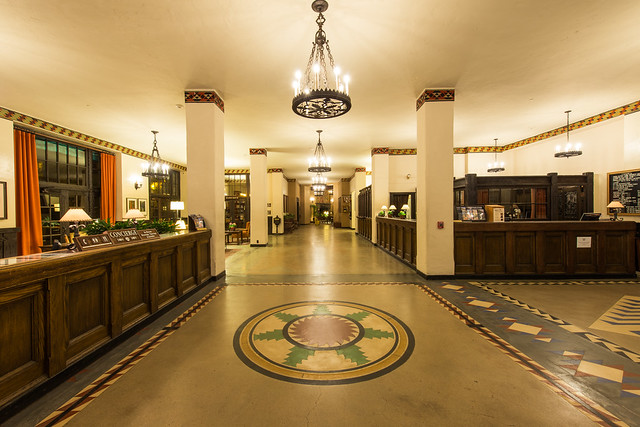
Fig. 1 - The Ahwahnee lobby, a Creative Commons image by J. W. Kern
The above 2013 Creative Commons image, by the photographer J. W. Kern, shows how much Kubrick took architecturally and design-wise from the Ahwahnee. The color of the pillars is no longer what it was when the film was made, but the trim appears to be the same as in older photos.
J. W. Kern has a beautiful page with more photos at his blog, the Golden Sieve.
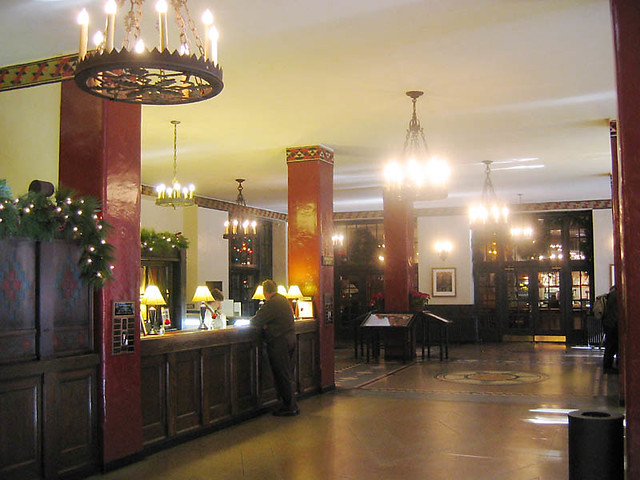
Fig. 2 - The Ahwahnee lobby, a Creative Commons image by Dave Ciskowsi
Another Creative Commons image from Flickr, this one by Dave Ciskowsi, shows how similar in color scheme the film's Overlook was to a more vintage Ahwahnee, if the 2005 image shows color even remotely similar to earlier years.
Kubrick borrowed from the Ahwahnee, with alterations, what is the receptionist and cashier area in the film. We see how the chandeliers and the designs on the film's floor of the Overlook lobby may not duplicate the Ahwahnee's designs but are in the spirit of them. At the Ahwahnee, and in the film's lodge, the columns are painted at the top with borders of a repetitive design, the Overlook's being different from the Ahwahnee.
My first thought on the designs at the height of these columns in the film had been to wonder if we might have somewhere in the Overlook the Greek Key, a meander border which was associated with the labyrinth, which would befit the maze (which we have yet to see), the Greek Key composed in such a way that when enlarged it formed a labyrinth. Such a design was used also by the Hopi.
Kubrick used the Greek Key design in Lolita, it circling the area in which was the ping-pong table in the mansion at which Quilty was staying when Humbert finds and executes him at the film's beginning.
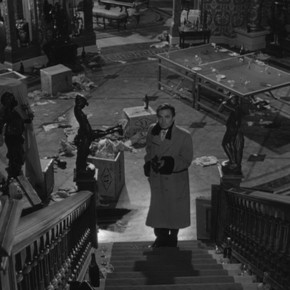
Fig. 3 - Kubrick's use of the Greek key at the beginning and end of "Lolita", initiating the execution of Quilty from it. Humbert's position on the stairs reminds of Jack's pursuit of Wendy up the great staircase in the Colorado Lounge in "The Shining", Humbert climbing these stairs in "Lolita" as he gunned down Quilty.
The decoration at the height of the lobby's columns in The Shining is done in a Z shape. The embellishments employed by Kubrick are in many places not the same as at the Ahwahnee, such as at the tops of these columns. "Shining" is later compared with sleep, that it can be like sleeping and upon waking not remembering everything one is told, and Z's are sometimes used for expressing sleep, such as in cartoons, but I also think of how the opening scene was accompanied by music signifying Judgment Day, and that Z is the final letter in the English alphabet, zeta, though it is the 6th letter of the Greek alphabet (value 7), based on the Phoenician zayin.
Just mulling here, throwing out some ideas on how Z can be interpreted symbolically if one wonders if there is some meaning behind Kubrick changing the design.
A zigzag pattern also can represent lightning, and some believe that the labrys, upon which is based the labyrinth, may symbolize lightning. If this is so then Kubrick may have used the Z pattern to represent the labrys axe and maze. When Jack axes Dick, he emerges from concealment behind one of the columns, blended with it.
One may think, "Oh, it's just decoration," but sets are not accidental. Environments annotate and propel the story forward; there is no small detail that can be taken as insignificant with Kubrick.
The building is fairly old, we learn later it was built about 70 years prior. There are radiant heaters in this section. In the lobby of the Overlook, as the film opens, a few people rest in armchairs reading, talking, but the lodge isn't exactly a buzzing hive of activity. At least, to the best of my memory, that's how I perceived it upon first view when the movie was released. Though the lobby was undeniably impressive, the furnishings seemed wearied to me, and the guests observed didn't suggest a well-rounded representation of various age groups. As they were older, no families or children observed, and were served by youth, the lodge seemed to be a place of rest and relaxation for retirees.
We will later realize that the lobby in no way is feasible in respect of either the Timberline exterior shots of the lodge or the studio exterior shots of the lodge, which will be the case also with the Colorado Lounge and other rooms as well.
As for the radiant heat, the fact that the hotel used a boiler was of primary importance in King's book. The radiant heat, powered by a boiler, isn't of so much importance here, yet Kubrick has rigged it so the Overlook has both radiant heat and forced air heat. The Colorado Lounge section and the halls associated with Room 237 only use forced air heat. The lobby, with its radiators, aappears to be dependent on radiant heat. What is peculiar is that we see in this shot that both the radiant heaters to the right and left of the door leading into the "Gold Room hall" off the lobby also have forced air vents behind them. Go figure. This area seems not to be dependent on radiant heat any longer for there isn't radiant heat in Ullman's office. There isn't radiant heat in the Gold Room or the red bathroom. The apartment in which the Torrances will stay does have radiant heat, as do a couple of the older halls.
Now, looking at the Timberline lodge in Oregon, at its entrance it shows a compass but with directional notation, whereas the compass points at the entrance of the Overlook don't show this.

Compass in the Timberline entrance
Below is the massive stone fireplace in the lobby of the Timberline. The sense of it as a spoke for a kind of wheel is an incredible weight of great force.
So when we are looking at the Overlook from the aerial view, this is what informs the pyramidal structure of the lobby, yet Kubrick has stripped it out of the film as far as the set interior, preferring instead to have no fireplace at all in the lobby of the Overlook, patterning its appearance after the lodge at Yosemite. I would, however, suggest the weight of this wheel is still there, just unseen, represented in the couple of wheel designs on the floor, in particular the wheel upon which Dick is slain, which also figures strongly in the scene of Danny's Big Wheel in the lobby resting upon it as Jack explores the indoor maze.
It is important that Kubrick chose the Timberline to represent the exterior, its structural design informing the hotel. Not only is the Overlook positioned on a kind of E/W dividing line (as described in the Opening analysis) it has also a world wheel heart powering it.
In A Clockwork Orange, when Alex is imprisoned, during prison exercises he is shown walking an almost relentless circle beneath the figure of a pyramid, and following that scene we go to his interview with the prison governor which has close parallels to Jack's interview with Ullman.
A NOTE ON 8 and 1/2
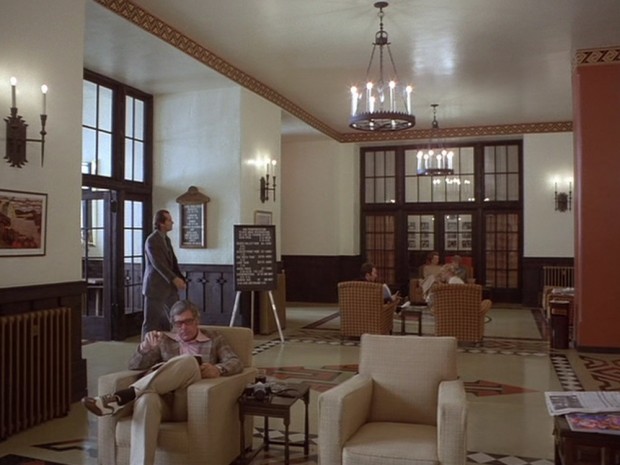
Fig. 4 - Jack enters the lobby.
Jack Torrance (Jack Nicholson) enters, his gray suit appearing cheap, limp and out of place with the resort attire of the others. He stands out, fitting in neither as a lodger nor as a hotel employee.

One salt and pepper gray-haired man in a plaid jacket and two-toned spectator shoes is prominent, reading near the entrance, smoking what may be a cigar, a drink to his side next a camera. The "spectator" shoes in combination with the camera is an interesting choice of attire for this opening shot. To my eye he looks like Marcello Mastroianni, and, with his camera, I've thought of him as perhaps being a reference to Fellini's 8 and 1/2 in which Marcello starred, playing, in effect, Fellini. The comparison isn't too far fetched when one considers that Jack suffers from writer's block and the director in 8 and 1/2 was suffering from a creative block and musing on his life and its relationship to his work, his imaginings mingling with reality.
Fig. 5 - Mastroianni as he appeared in "8 and 1/2".
But the reference to 8 and 1/2 is more than this. It takes us also to the last day of the The Shining, its two episodes simply titled "8" and "4". 4 is 1/2 of 8. Thus, 8 and 1/2.
OUR FIRST ACQUAINTANCE WITH THE GOLD ROOM HALL AND THE MAZE - HOW FLOW OF ACTION ABOUT THE SET UNCONSCIOUSLY CONSTRUCTS FOR THE AUDIENCE A PLOT OF THE UNSEEN ENVIRONMENT BASED ON NATURAL EXPECTATIONS
We will later observe compass points on a map of the maze outside on a board beside the maze. One will note that in the lobby, at the entrance, is a design which has arrows, one pointing toward the door and one pointing away. One would assume it would be like a compass and have four arrows, but we will later observe it only has these two.
Jack first looks to the left, in the direction of the hall in which, at the end of the film, we will see the famous photo that reveals Jack as present at the lodge in 1921.
We've no music. This is a pretty austere scene, shot so that it seems very straightforward. Most everyone who has come to see the film knows that Jack is here for a job interview and will become a caretaker for the Overlook and that this is a horror film. But there's nothing spooky about the lobby. Everything is shot so that anyone who has ever gone in to interview for a job will feel the cool banality of the situation and the pedestrian but anxious experience of how to relate with and put your best foot forward for this new sub-group of humanity with which you've just come into contact.
Four people are seated in an area on the screen right side of the main door. A man, reading, speaks with a blond woman in white. Opposite them sit two older women. As Jack approaches the lobby's reception desk, the woman in white turns. She isn't looking at Jack, as he's not in her line of sight. She seems to be looking toward the reception desk, but then a bellhop appears from the direction of the service hall behind the lobby and appears to port a silver lunch service to this group who are in the same area where Jack will himself have lunch on Closing Day.
Next, two young individuals in summery clothing pass by on their way outside, carrying tennis rackets and white balls, seemingly headed to play a game though we may notice the woman is inappropriately dressed in high heels. We see beyond them the sign "The Gold Room" which is to the right of double doors (only in the opening and closing scenes is this sign to the right), these double doors framed with gold drapes and leading to a hall with walls and doors in the same design as the lobby but which has red sofas and will be later observed to have the Gold Room carpet. Beyond the double doors to this hall, presently closed, are a man and a woman whose positioning conveniently conceals the place where is the aforementioned photograph that will only be revealed at film's end. Throughout the film, when action occurs in this hall, the camera stops short of revealing the area where the photograph is. Only toward the end, when Dick enters the hall previous his fatal confrontation with Jack, will the camera finally reveal briefly the area where the photo in question will be seen at film's end, and we'll observe that the photo in question isn't there.
These two individuals who are supposedly on their way to play tennis come from the direction of the service hall behind the lobby rather than from the stairs or elevators. Patterns of movement of individuals about the set one would think would be in keeping with their status, such as guests would normally come and go from guest areas, and the audience does naturally anticipate and assume this and thus will naturally, unconsciously, believe that the guests must be coming from, say, elevators that will lead to their rooms. The audience members are already building in their minds a plot for the hotel, and so they've every reason to assume that these characters are coming from something such as an elevator that accesses the guest areas. As the film unfolds, the staging one will eventually view back in that area will appear at first glance to have elevators, but on closer inspection the elevators will be revealed as bathrooms. There is no guest area concourse back here, instead only service halls for employees. As the guests tend to be older, it seems possible these two are also employees.
The heels lend a sense of the surreal--as if one has entered an area that purports to be "real" but there slip through bits and pieces that make one feel the reality is staged.
Building a plot of the unseen environment based on natural expectations is difficult to impossible in The Shining. Kubrick takes care to unveil the lodge only a little at a time, it unfolding over the entirety of the film, and the audience's natural expectations are proven false at every turn, but so deeply embedded is the assumption that the environment will be rational that the audience rarely notices that their assumptions are wrong and the map they're constructed in their minds of the hotel, based on what Kubrick has shown them, is impossible. Kubrick does not do this only in The Shining. The same happens with environments in Lolita and Eyes Wide Shut, as I've pointed out in my analyses of them, but Kubrick's skewing the sets so they aren't what they appear to be services The Shining well with its introduction of a sinister aspect.
Jack's action at this point mirrors what the audience is already unconsciously doing, surveying the lay of the land and constructing a mental map. He approaches a clerk at the registration desk for direction. She is homogeneously dressed in a shirt of a similar color to the terra cotta columns and a plaid vest that resembles the plaid jacket worn by the man with spectator shoes.
JACK: Hi, I've got an appointment with Mr. Ullman. My name is Jack Torrance.
RECEPTIONIST: His office is the first door on the left.
JACK: Thank you.
Directing Jack to Ullman's office, she points him to the "first door on the left".
As Jack continues on through the lobby, Kubrick gives us a brief glance again of the group by the door, to whom we'd believed the waiter had been carrying lunch. We don't see the waiter. The silver service he was carrying isn't on the table between the man and the blond woman, nor do we see it with the two older women. There is something on a table near them, but this was already there before the waiter approached, so the only table on which he could have placed his tray was between the blond and the man. But it's not there. Where has he gone? There is no door in that area through which he could have passed for the doors to the hall beyond are blocked by seating and if there did happen to be doors to an exterior patio (which there are not) he hasn't the time to exit them. He could only be somewhere out of sight behind the pillar that partially covers the man's chair.
Spooks? No, Kubrick is actually already setting up the scene of Danny's encounter with the eerie girls in the blue flowered hall, as well as Dick's murder, making a vocabulary of motifs that will connect them, which is why I bother with pointing out what seems a petty detail. I will come to how this works with Dick's murder in a moment, and explore the connection with the girls later.
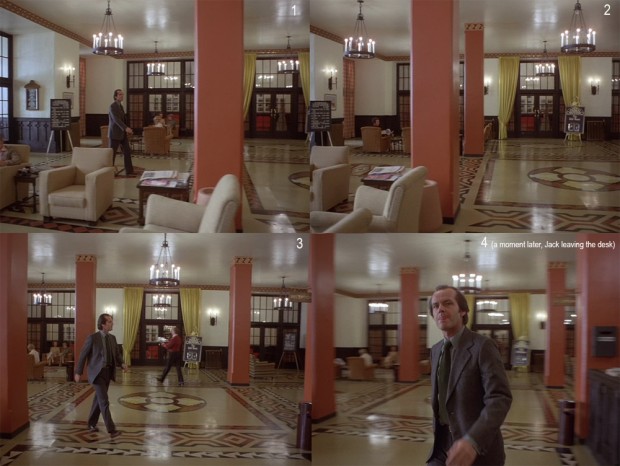
Fig. 7 - Kubrick briefly revisits the group by the door though he need not have.
The camera then gives us a view of a grouping of seats about a television set and a second grouping of seats beside a sign in the background that is difficult to distinguish here but reads "Camera Walk". We shall later see the same sign in the Colorado Lounge entry and be given a better view of it.
Is the man with the camera ostensibly there for a "camera walk"? Is he a guest or an employee who would lead the camera walk?
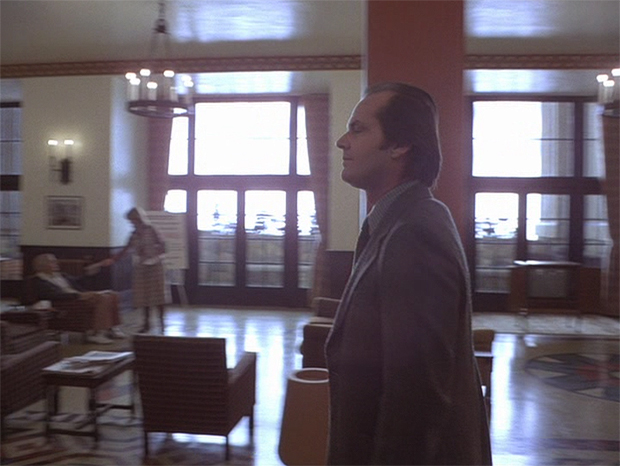
Fig. 8 - The Camera Walk sign.
The camera continually takes in new information on the hotel, just as Jack does.
As Jack makes his way to the office he now glances in the direction of a model of the hotel's maze that is beyond the two groupings of seats. We have no idea yet where this maze might be, but one assumes the inspiration for the model is somewhere on the grounds, even though our previous aerial view had shown no maze to the front or rear. Though we may not even be aware yet that what we're seeing is a model of the maze, that we're first introduced to the idea of the maze within the lodge comments on the lodge itself, which, as discussed above, if we compare our assumptions to its reality, is irrational and nonsensical at nearly every turn. That doesn't mean the maze is itself irrational and nonsensical. If one gets a full overview of a maze one might see at a glance its patterns and logic, but when one is immersed in the maze, one's knowledge of the "beyond" limited by the towering hedge walls, it is easy to become lost.
FORESHADOWING, JACK CROSSES THE CIRCLE WHERE DICK WILL LATER LIE SLAIN - HOW AMBIENT AUDIO UNCONSCIOUSLY CONSTRUCTS AND COMPLEMENTS ENVIRONMENT
Jack has glanced in the direction of a model of the hotel's maze as he crossed the circle upon which Dick will later fall when he is murdered by Jack, who will have been hiding in the lobby behind a pillar. The waiter and his silver service just disappearing from sight, perhaps behind a pillar, seems to be a foreshadowing of this. He would not be so completely hidden by the pillar, with his tray, had this not been staged.
Just a step beyond the circle, Jack's glance moves up to the stairs on the right, briefly meeting that of a hotel employee who is coming down the steps. This is the stairway Jack will, in the "4 pm" section, use on his approach to the lobby in the scene where he murders Dick. As his glance meets the woman's, he crosses the spot where Dick will be standing when Jack leaps out from behind the nearby pillar and kills him.
At the same time we are taking in an elevator beyond, before which stands a man who carries a wrapped pole of sort, perhaps a fishing pole as he carries a hat that is typically used for fishing. We can tell he's a new arrival as the red-coated valet behind him is porting his bags.
Two other things happen as Dick crosses this fatal spot. An elder man in light clothing has entered the area before the elevators from the hall beyond. This same man will later be seen examining the maze.
(3:27 crossing into 3:28) The second thing that happens is a subtle audio cue. We hear a brief, staccato voicing of "sha" which, at this point, we take as being part of the natural ambient noise of the lodge. I will write more about this voicing later. It's enough now to note that it has meaning, expanding in some way on the action which will later occur on this spot, action which is already being anticipated.
The timing of the first "sha" begins at 327, a permutation of 237, the number of the dreaded hotel room that Dick warns Danny away from.
Even if the "sha" occurring at 3:27 is purely coincidental, the choreography for the remaining collection of incidentals all falling on the same note is tricky, intentional, and beautifully accomplished.
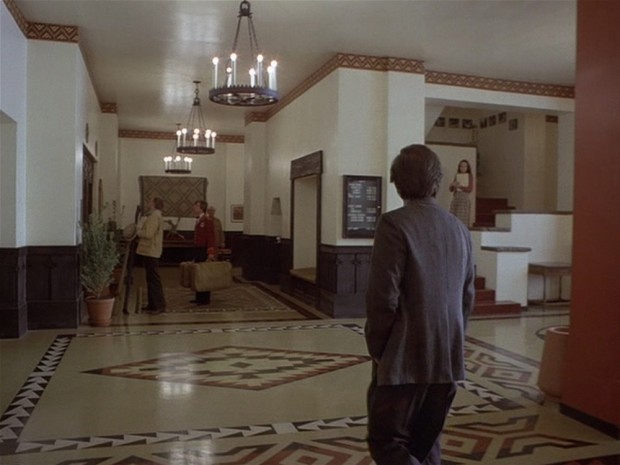
Fig. 9 - Jack crosses the spot where he will later kill Dick, leaping out from behind the pillar on the right.
Jack enters the office area of the General Manager, only a corner of a secretary's desk viewed on the left, but, speaking of ambient noise again, though we don't see a secretary typing away, we assume she is there because we hear the clackety-clack of a typewriter. At the same time, we see a door in the right wall leading to Mr. Ullman's office and catch a glimpse through it of another door that leads to the back service hall.
THE IMPOSSIBLE WINDOW
The wall right of the office door in the secretarial area is decorated with photos of the mountain as it appears over the span of the four seasons, only the snow-blanketed winter photo apparently showing the Overlook/Timberline lodge. All the views show Mount Hood's south flank. The autumnal photo presents Mount Hood in context with Mirror Lake, which the viewer may associate with St. Mary lake seen in the opening shot of the movie, that mirrored the landscape. The autumnal photo in particular will seem to, as the movie progresses, give an eerie sense of the lodge's mountain being watched from afar. Later, a painting above the double bed in the apartment used by the Torrances will provide a view of the lodge's mountain from a similar vantage point, only from across Mirror Lake during either spring or summer.
Kubrick would have appreciated the presence of a Mirror Lake at Mount Hood considering his interest in doublings. He may have even viewed the Overlook as a mirror or double of sorts.

Fig. 10 - Jack enters the secretary's office.
Below is the Timberline reception desk with a picture of the lodge overhanging.

Timberline reception desk with picture of lodge
On the left is a print that seems out of place with the hotel's decorative scheme. Of a person against a red background, it may look Mayan or Aztec influenced if one doesn't know its provenance. After many years of wondering about this painting, and a loon painting in the same secretarial area but on an opposing wall, obviously done by the same artist, I've been apprised by Ioway artist, Lance Foster, the art is by Norval Morrisseau. He directs me to this excellent bio that relates...
Morrisseau was assimilating and generating the content and direction of his vision. Everything was grist for his artistic mill. He recalled the black lines that held the glass pictures in form in the church windows. He recalled the side-vision of the Mayan friezes in the books he had read. The bright and harsh colours of Northern Ontario were as familiar to him as Autumn. He extended the written language of the pictographic language into a visual pattern as well as conduit of meaning. Included in Morrisseau's purpose was to portray his people as large, important, commanding and powerful. His purpose was nothing less than resurrecting the culture of the Anishnabe.
Morrisseau knew what all hunting and gathering people knew with their immediate contact with the preparation of game, that the exterior of the shape showed only the corporeal, but the inner, x-ray view of the structure revealed the spirit. From Siberia to Norway, to the Arctic, the spiritual content of the living object was shown by a technique that can only be called, x-ray vision.
It's easy to see why Kubrick would have been interested in his art.
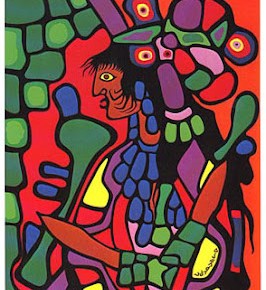
Fig. 11 - Morrisseau's "The Great Mother".
The name of the piece observed outside Ulmann's door is "The Great Mother". The painting seen behind Watson as he enters Ullman's office is "Flock of Loons". "Flock of Loons" is also seen near the secondary exit/entrance Wendy and Jack use to exit the lodge toward the end of the film. Why is a print of this painting placed in two places of the lodge? What connects the secretarial area with the exit? I can't say.
"The Great Mother" painting is a shock of energy in contrast to the subdued earth tones of the lobby and its ornamentation, as well as the photographs on the other side of the entrance to Ullman's office, seeming to exhibit a sensibility and knowledge of the world quite apart from the photos and the tepid lodge and the well-behaved humans wandering about it engaging quietly with each other. The picture is an x-ray of a quite different interior world.
Around the hotel we will see prints of pastels of indigenous children by Dorothy Oxborough. Is "The Great Mother" intended to be their mother?
The painting may refer to Wendy, who is often aligned with American Indian elements in the film. The hair style of the Great Mother can be compared to Wendy's three tiered haircut, which is less obvious in some scenes than others. When her hair is pulled back we observe that she has not only bangs but that a portion of hair is cut about chin level.
Does "The Great Mother" hold what Kubrick might mean to register as a club, foretelling Wendy with the bat? "The Great Mother" is vibrant, communicating a ferocious strength, in contrast to Mary as the great mother in Christianity and her passively suffering the sacrifice of her son.
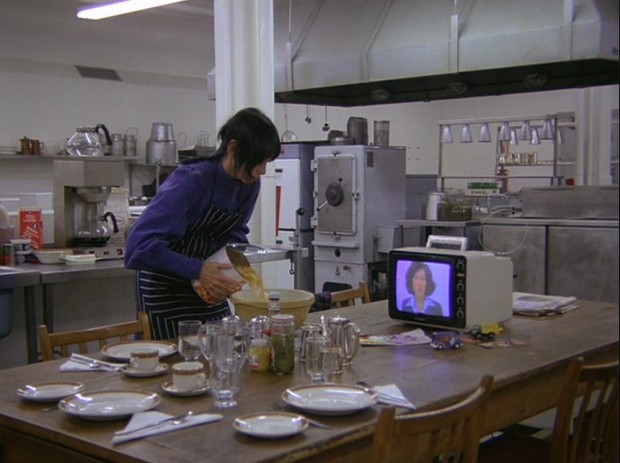
Fig. 12 - A hairstyle typical of Wendy. This is from the Tuesday section.
Looking at the filing cabinet again, it appears there is a small elephant resting on it before a postal weight scale.
Mr. Ullman's door is open revealing, in contrast to the lodge's general appearance, a more modern, though unimposing, salmon-pink room unpleasantly illuminated with several ceiling florescent lights and most prominently decorated with two high shelves on either wall holding potted plants. Two brown leather chairs face a large brown desk situated before a bright window on the sill of which appears to be a wood carving of an eagle or other predatory bird. A large map is on the left wall behind a two-way radio. On the right wall are immediately noticeable a number of honorific plaques and documents. We've the same feeling of symmetry here that will be found in the halls and the Colorado Room.
JACK (knocking): Mr. Ullman?
STUART (removing glasses): Yes?
JACK: I'm Jack Torrance.
STUART: Oh, well, come on in, Jack. Very nice to meet you.
Mr. Ullman (Barry Nelson) welcomes Jack pleasantly, rising and shaking his hand.
JACK: Nice to meet you, Mr. Ullman.
Stuart introduces his secretary, Susie (Alison Coleridge).
STUART: This is my secretary, Susie.
JACK: Susie, how do you do?
SUSIE: Hello.
STUART: Have any trouble finding us?
JACK: Oh, no problem at all. I made the trip in 3 and a half hours.
Did Jack have any trouble finding them? No, the drive was only three and a half hours. (Only!) Mr. Ullman says that Jack made good time and asks his secretary to bring them coffee and requests she call Bill Watson to join them.
STUART: Well, that's very good time, very good. Please sit down. Jack, just make yourself at home. Would you like some coffee?
JACK: Well, if you're going to have some I wouldn't mind, thanks.
STUART: Susie?
SUSIE: Sure.
STUART: Oh, and would you ask Bill Watson to join us.
SUSIE: Yes, I will.
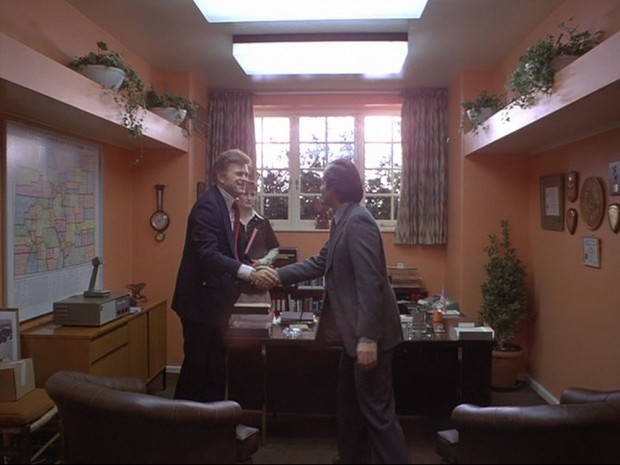
Fig. 13 - Jack and Ullman shaking hands before the "impossible" window.
Before continuing, it should be noted that the exterior window in the office is a physical impossibility, the office being entirely interior the building. We should be aware of this at least subconsciously as we have just viewed the lobby's elevator area extends far beyond the office, having even briefly observed the hall that is behind the office, the elder man who will later examine the maze having come from that hall. But we tend to accept the office as it is, ignoring the impossible window, because all else appears to be so normal. The characters accept the window and, trusting the characters, the audience assumes this must be an external wall.
But when one becomes fully aware it is an impossibility, the window becomes as forbiddingly out of place as the hazy glare it allows into the office, and the foliage outside the window seems almost to be as spies peering in. Boundaries decimated, made meaningless, the office can itself seem to begin to disappear, melting away as greenery invades.
The window is as artificial a source of light as the two glaring florescent lamps above. For all intents and purposes it is yelling at us, "What is wrong with this picture?! How can I possibly exist? What am I doing here?"
The characters never actually interact with the window. They never recognize it is there by either a glance, action, or comment.
An examination of the below map of the lobby and associated areas will make obvious the absurdity of the window.

Fig. 14 - Map of the lobby and the surrounding halls that will be unveiled throughout the film.
11 Crossfade from the office to Boulder exterior. (4:10 crossfade begins, full fade in by 4:12.)
Ullman's assistant stepping out for coffee, begin the crossfade from the office to the apartment back in Boulder, blue skies pouring in through the florescent boxes on the ceiling so they become as skylights, the Flatiron mountains back in Boulder filling the impossible window.
We briefly have the feeling of being within the confines of the hedge maze with the Boulder greenery filling in the wall to the left, and the potted plants spilling their greenery from above.
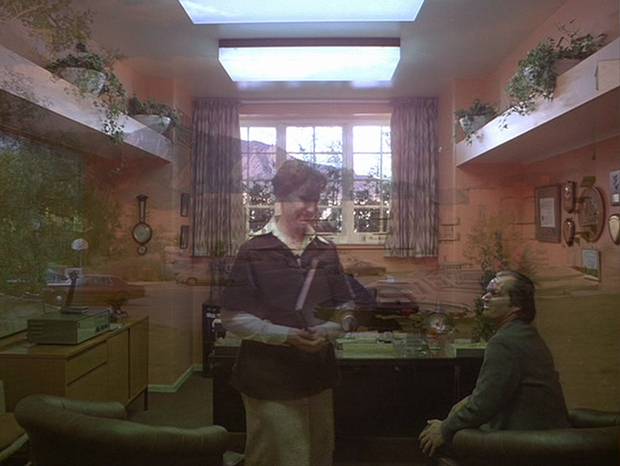
Fig. 15 - The crossfade from Ullman's office to the apartment complex in Boulder.
LUNCH WITH DANNY, WENDY, TONY (DON'T FORGET TONY), THE CATCHER IN THE RYE, AND THE KENSINGTON
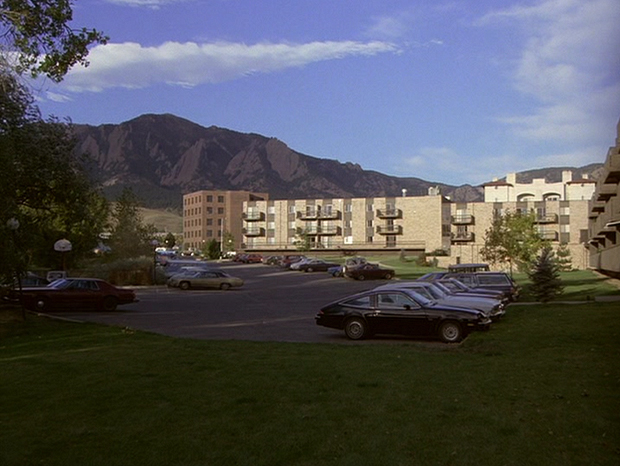
Fig. 16 - The Boulder apartment complex. View its location taken from Google street view.
Accompanied by the sound of dogs barking and children playing (though none are observed) slow zoom in on a complex of blank apartment buildings via a parking lot with a basketball post to the left, the buildings backed by mountains, recalling the initial shot of the lodge at the end of the opening sequence of the movie and striking a parallel.
If you happened to miss the link just above, here first is a short post on the blog with repurposed shots from Google Maps street view pinpointing the location of the Boulder apartment.
The name of the apartment complex is the Kensington.
Why this particular apartment complex? Has it anything to do with it being the Kensington? Are we to be reminded of Peter Pan and Wendy, Jim Barrie having met the Davies children at Kensington Gardens and playing with them there? Would Kubrick have us think upon Wendy and the lost boys to whom she serves as a mother figure, and Peter Pan who counts adult mothers as his enemies? Peter Pan's habitat was Neverland, and the two girls in blue will first appear to Danny here, who will later beckon him to come play with them forever, and ever, and ever, just as Jack will say he wishes they could stay at the Overlook forever, and ever, and ever. When Jack abusively berates Wendy, his language is that of a person hostile to the responsibility of parenthood, a sense of his feeling entrapped by her and Danny, the responsibility of the Overlook finally replacing those familial ties in the dramatic Colorado Lounge scene.
Jim Barrie was, himself, a rather sinister figure in his attraction to boys.
12 MS of Wendy and Danny in the Boulder apartment dining area. (4:19)
Cut to Wendy Torrance (Shelley Duvall) sitting at a dining table with her ash blond-haired son, Danny (Danny Lloyd). The table is covered with an orange-red and white checkered cloth in which we can see printed symbols such as hearts and fish. Dressed in red union suits (she wears two, which will eventually become apparent) with a light blue checked pinafore/jumper over them, she drinks coffee and smokes, reading a red paperback with gold lettering, The Catcher in the Rye.
A red field to the right of Wendy mirrors or doubles her sleeve and we are never really given a clear visual of to what that red field belongs. The book also displays mirroring/doubling, with the title displayed in the same manner on the back cover as on the front. A reason the red field to the right isn't noticed generally, and we don't look for to what it belongs, is that Wendy's leg in the foreground seems to pull the eye into her and the laundry basket on the stand of the ironing board in the background that then seems to link the eye over to Danny.
Danny eats a white bread sandwich, watching a television that is off screen in the yet unseen living room. Wendy has also a sandwich but it is untouched. To Danny's side on the table there is a black object later revealed to be a toy gun in the scene in which he explores the maze with Wendy (the gun is apparently from the Star Trek Phaser II Target Game). White shelves holding books hang on the rear wall. In the background is the yellow laundry basket with clothes on an ironing board, books stacked on it as well. A baseball rests on the board between the books and the basket. For a while I misinterpreted a little sculpture next to salt and pepper shakers as an elephant. I was wrong! A reader, Melkarth, sent me an image which shows it's an alabaster bull. What appears to be a blue box showing Q-tips Cotton Balls stands on the first shelf of the bookcase beside the alabaster bull figurine, and could possibly be taken as a stand-in for a blue sky with clouds considering its placement above the horizon line. This box too is positioned so that it exhibits doubling. Below, resting on the floor is a tray decorated with flowers all in autumnal brown tones, and the plates upon which they eat are decorated similarly. Kubrick has unobtrusively incorporated a natural landscape via the flowered tray and the box. It is something which we humans do all the time, bedecking all our accoutrements of life with natural and abstracted floral and fauna designs and symbols.
The presence of boxes in the background immediately communicates impermanence, transience. This is a family that is either coming or going, not quite settled in yet or preparing to move along.
As for the presence of the phaser from the Star Trek game, if one looks it up one finds the art on the game's box shows an unidentified man in a red shirt shooting a villain whose body is divided so it's half black and half white. I guess this would be Bele from the story "Let That Be Your Last Battlefield". In it, Lokai, a man whose body is half black and half white, requests asylum on the Enterprise, claiming he's a political refugee. Bele, whose skin is a mirror image of Lokai's, is in pursuit of Lokai. Bele states he's a police commissioner and Lokai is a not a refugee but a political traitor. The conflict is revealed to be one of slavery and racial segregation. Returning to their planet, Cheron, it's discovered to have been destroyed by racial war. Still, Lokai and Bele are unable to resolve their differences and chase each other back down to that world, the storyline ending so that we have no idea as to their fate. Peculiarly, they both were able to manifest individual force fields that made the Star Trek phasers ineffective.
Jack will murder the only African-American in The Shining.

Fig. 17 - Wendy and Danny eat lunch, watching cartoons.
Wendy's appearance doesn't strike as eccentric or "mousy" today (or to me it doesn't) but back in 1980 her style here would have been perceived as somewhat peculiar, the latitude allowed for divergence from a certain conception of attractiveness not being exactly broad. So, Kubrick has cast as his heroine an actress who departs from the strict ideal and has accentuated this, for in the documentary of The Shining Shelly exhibits indeed a striking, ethereal beauty.
Many dark-haired parents have children with light hair, but the audience may have worked for a minute to accept Wendy as light-haired Danny's mother, as they look so dissimilar.
Kubrick's portrayal of Wendy departs from King's book, which imagined Wendy as an attractive, sensual, blond, King's later movie casting Rebecca de Mornay, who fulfilled the type.
We hear a familiar "beep beep" that resonates with the childhoods of so many who grew up mid 20th century and realize that Danny is watching a Roadrunner cartoon. These cartoons concern Wile E. Coyote always being foiled in his attempts to catch the Roadrunner, both being tricksters but Wile E. not quite as crafty. There's hardly a person in 1980 who wouldn't have immediately bonded with the pedestrian situation of the lunch table and its simple sandwiches through the familiar cartoon vocabulary of a cartoon that was a shared experience. Not to mention everyone grew up eating white bread peanut butter and jelly sandwiches.
Danny wears a red, white and blue pullover shirt printed with another trickster figure, Bugs Bunny, who stands beside a basketball hoop, and we recall the basketball hoop in the parking lot. The blue sleeves are decorated with white stars on red bands.
DANNY: Mom?
WENDY: Yeah:
DANNY: Do you really want to go and live in that hotel for the winter?
WENDY: Sure I do, it'll be lots of fun.
DANNY: Yeah, I guess so. Anyway, there's hardly anybody to play with around here.
Danny sounds unconvinced on either count. Just a few moments before we had heard the sounds of children at play outside and though we'd not seen those children the audience is not entirely convinced that there are no children around with whom Danny could play. His isolation may stem from something other.
WENDY: Yeah, I know. It always takes a little time to make new friends.
As Wendy says "friends" we cut away to Danny's reaction, the sound of a train in the cartoon beginning and continuing through Tony's initial protestations that he doesn't want to go to the hotel.
13 MCU of Danny. (4:45)
DANNY: Yeah, I guess so.
Shortly, much will be made of the isolation of the hotel, but the family is already living an isolated life in Boulder, though the situation doesn't stand out as peculiar yet. Just a mom and son eating sandwiches in a kitchen that, by virtue of its lighting and the framing of the shots, is experienced as real-life rather than a set.
The presence of The Catcher in the Rye at the table may belie Jack's later assertion that Wendy is a great fan of ghost stories and horror. The novel concerns the collapsing mental health of a teenage boy who has problems with "applying himself" and has recently been kicked out of his prep school. Jack, in King's novel, was fired from his job at a prep school due an altercation with a student, but this is never mentioned in the film and no clear reason is ever given for the family being in Colorado, so one could possibly look upon The Catcher in the Rye as filling in that lost part of the story. I also wonder if the novel wasn't partly used for the antipathy of the novel's protagonist for Hollywood films and the feeling his brother had squandered his talent by going to work for Hollywood.
As already noted, the front and back covers of the book mirror each other, partnering with other doublings specifically having to do with Wendy in this scene (such as the red field mirroring the red sleeve) and in her later conversation with the doctor. She is somewhere in the middle of Holden's autobiography on his troubles with leaving the more innocent world of childhood for the grim, disheartening reality of adulthood when she places the book down to dialogue with Danny and attempt to convince him that being isolated in the Colorado wilderness for the duration of the winter is a fine idea.
14 MCU of Wendy. (4:50)
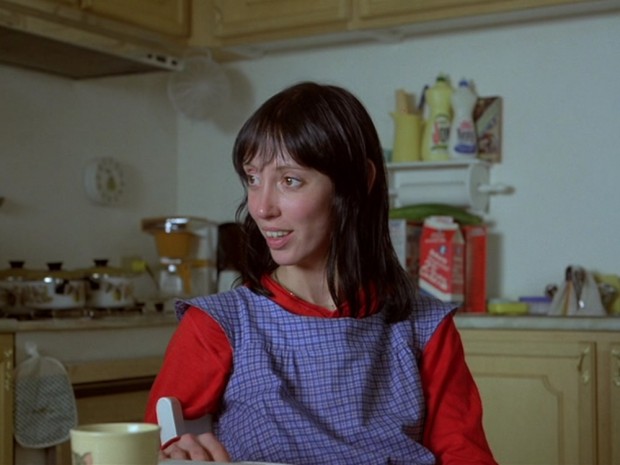
Fig. 18 - Wendy and the kitchen.
The camera now shows another view of the kitchen behind Wendy, Joy and Ivory dishwashing liquids on a shelf above a wall-mounted paper towel holder, dishrag draped over the kitchen sink's faucet, carton of milk on the counter with several other boxes of dry goods. The view also shows the oven with matched pots arranged on top, an exhaust fan above, and perhaps a coffee maker. The Torrance's apartment in Boulder is standard fare for the era.
The white diagonal on the red, white and blue milk carton in the background seems to help direct the eye up and toward Wendy's face, so we focus on it.
Though the red milk carton and red cereal box have nothing to do with the red field mirroring the red sleeve earlier, even though they are in a completely different position, they end up visually standing in for that red field so we feel no real compulsion to look for it.
WENDY: What about Tony? He's looking forward to the hotel, I bet.
15 MCU of Danny. (4:53)
Tony is revealed to be an imaginary friend of the boy's. In this scene, he's actively encouraged by Wendy to enter the dialogue. If Danny is unconvinced that going to the Overlook is a swell idea, she is attempting to use Tony to convince him otherwise. But Tony's more independent than that.
Danny moves the index finger of his left hand as a physical representation of Tony, and what Tony squeekily has to say is...
TONY: No he ain't, Mrs. Torrance.
Which is perhaps how Danny really feels but is reluctant to voice disagreement. Though Danny speaks with Tony's voice, Tony is referred to in the third person, which indicates Danny is Tony's actual voice.
16 MCU of Wendy. (4:57)
WENDY: Now, come on, Tony, don't be silly.
17 MCU of Danny. (4:59)
TONY: I don't want to go there, Mrs. Torrance.
"Tony" now refers to himself in the first person.
18 MCU of Wendy. (5:01) The camera has cut to Wendy while Danny/Tony said "Mrs. Torrance."
WENDY: Well, how come you don't want to go?
19 MCU of Danny. (5:04)
TONY: I just don't.
20 MCU of Wendy. (5:06. Crossfade to office begins at 5:10.)
WENDY: Well, let's just wait and see. We're all going to have a real good time.
"We're all going to have a real good time," and the audience laughs, because most everyone's mothers would send them into a crumbling coal mine with the admonition to pay no attention to your lazy, narcoleptic canary, because you're going to have a great time (they sent you to kindergarten, didn't they).
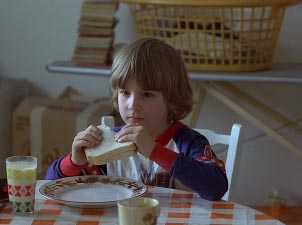 13 |
 14 |
 15 |
 16 |
 17 |
 18 |
 19 |
 20 |
Stylistically, as far as set design, it's interesting how the sharp angle in the graphic design of the milk carton, which rests above and follows Wendy's shoulder, is echoed in the diagonal of the ironing board stand above Danny's shoulder. These angles not only seem to push the eye toward the center of the screen, they also are dynamic enough that they provide a similitude that ties these shots together. One more thing I would like to make mention of is the long zucchini that is seen resting on the milk cartons, below the dishwashing liquids. It's positioned to be noticed, to not disappear on the counter. My thought on it is that it may refer to the green and blue object held by the Great Mother in Morrisseau's painting in the secretarial office at the Overlook, connecting Wendy with the painting, she attired in the reds and blues of the painting, and, as I mentioned earlier, her hair styled like the Great Mother, who seems to me to not only be a nurturing presence in Morrisseau's painting, but to have in her also the violence of life.
21 MS Stuart's office. (5:14 crossfade from Boulder apartment ends.)
We have crossfaded back to Jack and the red-haired Mr. Ullman drinking coffee, the camera view in opposition to the one earlier, positioned now to show the office from behind Ullman's desk, a large bright red book prominently placed on it. The crossfade juxtaposes Wendy looking right as Bill Watson enters, he also looking right, as if a connection is being forged between them, and at least one is forged visually, however briefly.
About the cartoon...
Having learned via John Bourassa that the cartoon playing is the "Stoop! Look! And Hasten! one, thought I'd check it out.
In the cartoon, the train sound starts and we have two whistles, this repeated again with the two whistles, then immediately thereafter Wiley E. (having believed he's escaped the train which was below him) hears a louder roaring of the train and turns to see its big white light bearing down on him inside the dark of the tunnel behind him and then there's a resounding explosive encounter.
In The Shining we have the train roar with its two whistles, followed by the other one with its two whistles, and Kubrick leaves out the last big white light roar and crash. He doesn't just cut it out, he jumps a few seconds into a following segment, letting us hear the elastic kind of sound (like rubber bands) of one of those boxes with a handle you press down so TNT goes off, and there's a big explosion that follows that in the cartoon but Kubrick cuts that out. He also cuts out the following escapade of Coyote on a revving motorcycle and its crash, Kubrick exiting with music heard during the next escapade in the cartoon when Wiley E. is pouring Acme bird seed out onto the road.
I'm sure that I've thoroughly managed to confuse you there.
That excised big bright white light appearing out of the dark part of the cartoon in a sense will be replaced with the painting of the horse racing down the train track toward the light of the oncoming locomotive as Wendy and the doctor leave Danny's room and sit down in the living room for their consultation. And, recollect, we have the doctor shining the bright light in Danny's eyes just previous that.
The cartoon tunnel seems to anticipate the movie Wendy will be watching when Jack calls her that he's gotten the job at the Overlook, its plot concerning the creation of a train tunnel.
Comin' Through the Rye
My current question on the presence of the Catcher in the Rye book is if it may also refer to the presence of Comin' Through the Rye in Basil Dearden's 1957 film Big Time Operators (renamed The Smallest Show on Earth for the US). In it you have some themes that come up again and again in Kubrick's work, the blurring of the line between art and reality, the breaking of the 4th wall. Plus, Peter Sellers, who was in Kubrick's Lolita and Dr. Strangelove, plays a film projectionist in it.
The plot of the film. A couple receives an old movie theater as an inheritance. As it happens, the ancient theater is now next a train line. At this old theater, the Bijou, they play mostly these terrible old cowboy and Indian films (which were made for this film). During cowboy and Indian chase scenes involving a train, the train that runs by the theater coincidentally passes at the same time, shaking it up, coincidentally stops when the train stops on the screen, then restarts when the train on screen restarts. Reality syncs with the film. Wanting to learn how to make their theater more popular, the couple goes to a rival theater and we see during an entertainment break an "ice cream girl" (sweets dispenser) appear on the movie screen and progress down on-screen stairs toward the viewer. Then the same happens in reality in front of the movie screen and the audience buys all these sweets. So, the sweets girl seems to exit the film and enter reality. The couple, to enhance refreshment sales in their theater, tries this technique. Not only do they have a sweets girl but they regulate the environment in the theater. The janitor is shown in the boiler room boosting the temperature so that, while the audience is watching films on people near dying of thirst in the parched desert, the viewers are also experiencing extreme heat that provokes thirst, and this boosts refreshment sales dramatically.
This is similar to Kubrick's breaking of the 4th wall repeatedly in A Clockwork Orange, referring to the presence of the audience in various ways and thus making it a part of the story, the film. I could give other examples, such as when Kubrick even treats his people on the screen as real individuals attempting to interact with the audience, as happens with the boxer's manager in Killer's Kiss when he is attempting to escape some thugs and pounds upon a theater door, trying to attract the attention of the audience to the threat against him, but fails.
Kubrick repeatedly used trains in his films as a symbol for synchronicity and cyclings of events. In A Clockwork Orange we have the comic of the "ghost" train, in which a photographer takes a photo of a train accident that happened a hundred years beforehand. The question posed is how did it happen? In Eyes Wide Shut the newspaper articles that surround the one on the OD of the model have to do with synchronous violent events on a subway/train happening several years apart almost to the day, those stories having been real life events. Again, in the apartment in Boulder, Wendy is watching a film about the building of a railroad track and there is the painting of the horse running down the train track toward a pre-scripted destiny. Always the ideas of free will versus a mechanical universe are parlayed.
But back to The Smallest Show on Earth. Peter Sellers, as a projectionist who is trying to not drink, has to wrestle constantly with the theater's ancient projectors to not only keep them running but to prevent them from destroying the film. The projectionist room in that movie even resembles the boiler room in the basement in The Shining. The vibe is the same and the projectors look like miniature versions of the boilers that only serve a portion of the Overlook, forced heat being used in much of it. I posit that we need to reflect upon what it means if Kubrick is tying in these projectors with the idea of the boilers, and it seems he is. Though much isn't made of the boilers in Kubrick's film, the boiler was nearly a character in King's book, representing Jack's rage. In The Smallest Show on Earth we have these problematic projectors that work in concert with the janitor hiking the heat of the Bijou's boiler to make people overheat and purchase drinks. Film footage displays a desert scene, the heat of the boiler is raised, everyone sweats and thirsts. What is more, the audience is represented as unconscious of their thirst being connected to the heat being jacked up during the desert scenes. Just as the Bijou's audiences are influenced, both intentionally and by synchronicity (the train), experiencing certain aspects of the film in reality, what do these intersections mean to the audience of film in general (or any art), and in particular The Shining?


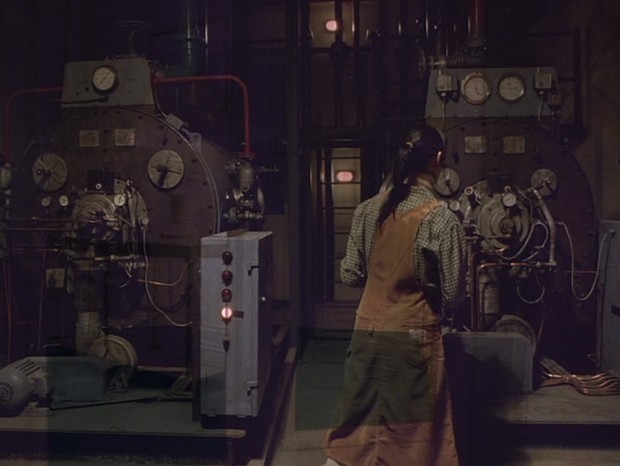
Fig. 21 - Wendy checking the boilers in the basement.
The Bijou Cinema having been revived (somewhat), the new owners enter one day to hear the projector running and a piano being played. They go in and find the projectionist and the janitor and the ticket taker, who have worked there for decades, holdovers from the old days, watching the old silent feature Comin' Through the Rye. On the screen we see a man departing, through the rye, and his lover telling him that before his return the rye will be harvested and her heart as empty as the field. Peter Sellers tells the new owners that he has saved all these films from the old days and now the theater feels like old times. In other words, the theater's revival has revived the past. Much the same happens with Jack at the Overlook. He revives, in it, the past.
I'm going to use this line of thought as an oblique in to bringing up Jim Barrie again as regards Kubrick's choice for using an apartment complex called the Kensington for the Boulder scenes, which provides links to Peter Pan and not only certain aspects of its story line, the perpetual return of Peter Pan, but even the questionable circumstances surrounding Jim Barrie's relationship to the boys and Peter Llewelyn Davies, in 1960, committing suicide by throwing himself in front of a train when he was laboring to put in order letters and documents concerning the family and their relationship to Barrie, his plan being to publish them but also destroying more than 2000 letters written between his brother Michael and Barrie as he said they were "too much". Again, we have a train tragedy connected with revivification of the past.
Basil Dearden, director of The Smallest Show on Earth, also was one of the directors showcased in the old horror classic Dead of Night. As with The Shining, that film, too, is all about deja vu. An architect goes to an old country house, hoping for some work, and realizes that it is a house he has dreamed about--a dream which ends badly. Will the same fate be suffered in real life? We are treated to several ghostly paranormal tales told by individuals who keep entreating the architect to stay. One of those stories is a comic paranormal tale involving golf, and I've considered it may be the source for the "Golfing with the Greats" reference we'll see in the Boulder kitchen when Wendy is washing dishes. Another tale concerns a ventriloquist with a dummy that turns out to be independently alive, a plot that served as basis for the later Danny Kaye film, Knock on Wood. Basil Dearden included a reference to Knock on Wood in The Smallest Show on Earth. Knock on Wood is the film that is playing at the rival theater when the couple goes to a show there and sees that refreshment sales were enhanced by the attractive sales girls who replicate the sales girl seen on the screen. So, in The Smallest Show on Earth the two real films used in the theaters are Knock on Wood and Comin' Through the Rye. The rest were made for the film and concentrate on the Cowboy and Indian theme. When the old theater is about to be closed again, the couple that inherited it settle in to watch the "red-skins' bite the dust one last time.
Circularity of action is in all of Kubrick's films. Dead of Night, as it turns out, was one of the points of origin for the Steady State of the Universe theory conceived by cosmologists Fred Hoyle, Thomas Gold and Hermann Bondi, which has since been overruled by the Big Bang Theory.
"The steady-state theory was inspired at least in part by a 1940s movie entitled Dead of Night. The movie had four parts and a circular structure such that at the end the movie was the same as at the beginning. After seeing this movie in 1946, Thomas Gold, Hermann Bondi, and Fred Hoyle wondered if the universe might not be constructed the same way. The discussion that followed led ultimately to the steady-state theory."
Kubrick employed this kind of circularity almost from the beginning. It was in Fear and Desire, in which the film begins as it ends with the same view of the valley. He used it in A Clockwork Orange with Alex revisiting in the 2nd part places he'd visited in the first. The same happens in 2001, the 2nd half beginning with almost all shots of Frank's space walk replicating, with slight changes, shots from when Dave was doing his space walk. We have this circularity in The Shining with the deja vu. We have it in Eyes Wide Shut with the synchronous events of the trains, with Bill wandering the same streets again and again, and his attempting in the second part of the film to revisit places from the first part and locate people who have disappeared between the first and second parts.
The silent film Comin' Through the Rye is based on a book by Helen Mathers, in which the rye field becomes connected with history repeating itself.
...I go to the stile that divides the meadow from the field of rye, and lean over it, thinking dully of that day two months ago, when I made my wreath and sent George away cross, and ran against Paul Vasher in the midst of the ripe grain.
"History repeats itself," I say, half aloud, as I watch those cunning workmen--the ants, scurrying about at the base of the primitive stone stile; "but only up to a certain point, and there it always fails. Now there is no Paul to come over the field today; he is probably shooting with the rest at Luttrell. I shall never have a chance of seeing him here either, for after today I will not come this way."
I lift my eyes and see Paul Vasher coming across the field of rye to meet me. I do not speak or stir; the hour has come, and must be met..."I have come to claim the fulfillment of your promise," he says...
That pretty well clinches it for me that Kubrick, by means of Salinger's Coming Through the Rye book, was referring to The Smallest Show on Earth, and by means of it the silent film and book, Comin' Through the Rye. When Wendy is sitting there with the Salinger book, its back cover perfectly mirroring the front cover, with the hidden reference to Mather's Comin' Through the Rye, she is reading a book on history repeating itself.
INTRODUCING BILL WATSON, A MAN WITH PRECIOUS FEW WORDS ON THE SITUATION - THE OVERLOOK'S SAD HISTORY RELATED
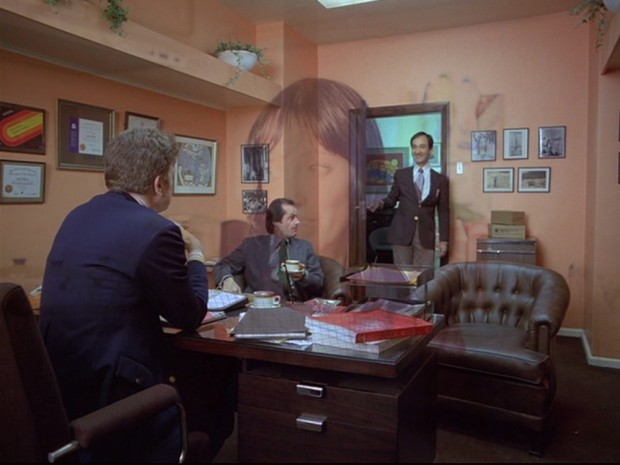
Fig. 19 - Crossfade from Boulder to Ullman's office.
First, I would encourage one to take note as to how the bottom lines of the cabinetry and the hood of the range in the Boulder kitchen beautifully line up with the lines for the ceiling and the shelving at screen left in the Overlook office. Attention to elements such as these make for a fluid transition in the crossfade.
The sharp angle of the graphic design of the milk carton that moves upper screen left to lower screen right, is answered here by the framed graphic on the wall that presents a sharp angle moving from upper screen right to lower screen left. Though the eye does go to Bill as he enters, by the lines of the kitchen cabinetry and range crossfading into the shelving and ceiling, and the propulsion of the lines in the strong graphics I've just mentioned, the eye feels as though it is being pushed also to just between Stuart and Wendy as she fades out. From there, the eye seems even to be pulled, by the yellow and orange framed graphic, off screen to the left. It's an interesting way of moving the viewer's gaze.
As Bill enters, we see in the secretarial area beyond a print on the wall. This same print will be observed again at the end of the film in a foyer where we will finally view characters entering and exiting the lodge, specifically when Wendy goes out to inspect the Snow Cat which Jack has disabled, when Dick arrives, and when Jack leaves the lodge to chase Danny into the maze. It is "Flock of Loons" by the artist Norval Morrisseau. I've already noted how I believe Wendy is to some degree represented in Morresseau's painting of the Great Mother, and with the crossfade we have her face briefly viewed in conjunction with Morrisseau's work.
She is also, through this crossfade, allied with the caretaker, Bill. As we will later see, Kubrick suggests to the viewer that Wendy is the one, rather than Jack, who does much of the caretaking of the lodge.
The large, bright red book in the foreground possibly complements and takes the place of Wendy's reading of The Catcher in the Rye with its red cover. She was in the middle of that book, a page dog-eared, and the middle portion of this book is blue, bisecting the first half from the latter.
Ullman introduces Jack. As Bill sits in the chair next to Jack, Ullman tells Watson that Jack will be caretaking the Overlook that winter and that he wants Bill to walk him around the lodge. We know from King's book that Bill Watson is the summer caretaker and a descendant of the original owners of the lodge, so a certain symmetry is formed with these two caretakers seated next yet opposite each other. In scenes where Bill and Jack are viewed from the rear, a complementary chord is struck, though Bill is dressed in a more tailored suit with a dark brown jacket and lighter brown pants.
Kubrick's Watson differs significantly from King's. King's vision was a vulgar and seemingly uneducated older man, and Watson's suit and tie are little suited to the job unless his duty is to act primarily as an overseer of others who do the dirty work, which isn't as it was in the book. When we later see the boiler room, which is also a kind of ramshackle office with an old desk and refrigerator, Bill, as he is represented by Kubrick, seems he would ill fit in with that setting and its numerous girly pin-ups.
STUART: Bill, I'd like you to meet Jack Torrance.
BILL (closing door): How do you do?
JACK (has risen to shake hands): Bill, how do you do?
BILL: Pleasure to meet you.
JACK: Pleasure to meet you.
STUART: Grab a chair, Bill. Join in. Jack is going to take care of the Overlook for us this winter. I'd like you to take him around the place as soon as we're through.
BILL (seated): Fine.
STUART: Jack is a...
22 MCU of Jack. (5:32)
STUART (off-screen): ...schoolteacher.
JACK (correcting): Uh, formerly a schoolteacher.
BILL (off-screen): What line of work are you in now?
JACK: I'm a writer. Teaching's been more or less a way of making ends meet.
23 MCU of Bill. (5:43)
BILL: Well, this ought to be quite a change for ya.
24 MCU of Jack. (5:45)
JACK: Well, I'm looking for a change.
And that's it for Bill Watson's speaking role in this scene. He has said, "Pleasure to meet you", "Fine", "What line of work are you in now", and "Well, this ought to be quite a change for ya" and now falls into silence, only observing.
As the camera stays fixed on Jack, Ullman begins...
STUART: Our people in Denver recommended Jack...
25 MCU of Stuart. (5:50)
STUART: ...very highly.
A medium close-up now of Ullman's desk shows, among other things, his prominently displayed name plate, a black fountain pen, a pewter tankard holding more pens, a white pen next to a desk calendar, a pint-size American flag, and we notice his red and white striped shirt and red tie and blue blazer patriotically echo the flag.
The desk is covered with protective glass and appears even more cluttered than it is partly because of its reflective surface mirroring all the objects placed upon it.
Throughout these shots of Ullman, we don't see the bird statuette on the window sill behind him, which is there but concealed by his head.
In the background, on the left, is a rather unattractive wooden object of a peculiar shape that doesn't appear to be a sculpture but has no obvious purpose. The feel is of stripped branches arranged into what is supposed to be of utilitarian function, but it's rare to be unable to guess how an object may be used. In more removed shots we see on the right of the desk a medium-size bush in a floor pot, that plant having two pokey branches ascending above the rest and being about the same height as the peculiar object on the left.
STUART (smiling): And for once I agree with them.
Ullman has a bit of quirk where he often rubs his finger against the side of his nose or beneath it, bringing to mind Danny's Tony who assumes presence via Danny's index finger.
When Wendy had brought Tony into the conversation, it had been to try to get the agreement of another party in going to the Overlook.
There is more than a passing similarity between this scene and the one in A Clockwork Orange in which Alex meets with the governor of the prison.

Fig. 21 - The prison's governor in "A Clockwork Orange".
With Ullman we have his shirt and its cuffs prominently echoing the flag, while with the prison's governor we have his shirt and cuffs echoing the color of the flowers on the window sill behind his desk. Alex's interview was in preparation for treatment to aid his reform, an opportunity provided by a "new order". Here, Ullman is about to reveal some disquieting information, but one still has a sense of things withheld, just as in A Clockwork Orange the prison's governor doesn't divulge to Alex what the nature of his treatment (Serum-114) will be.
THE STORY OF THE WINTER OF 1970
STUART: Now, let's see, where were we? I was about to explain that, uhm, our season here runs from, uh, May 15th to October 30th, then we close down completely until the following May.
26 MCU of Jack. (6:07) Jack convivially wonders why.
JACK: Do you mind if I ask why you do that? Seems to me that the skiing up here (sha) would be fantastic.
STUART: Ah, it sure would be...
27 MCU of Stuart. (6:14)
STUART: The problem is the enormous cost it would be to keep the road to Sidewinder open. It's a 25 mile stretch of road and gets an average of 20 feet of snow during the winter, and there's just no way to make it economically feasible to keep it clear. When the place was built in 1907 there was very little interest in winter sports and the site was chosen for its seclusion and scenic beauty.
28 MS of Bill, Stuart and Jack. (6:40)
JACK: Well, it's certainly got plenty of that
All laugh.
STUART: That's right.
Despite the fact that's an impossible window, it casts quite a glaring light, strongly marking the ceiling with illumination and shadow. We note a low glare of light on the face of the desk between Jack and Bill Watson, prominent enough that it almost takes on a sense of phantom presence.

Fig. 22 - Bill, Stuart and Jack in Ullman's office.
Take a look at how beautifully Stuart is framed here, the visual relationships between the three men and the room.
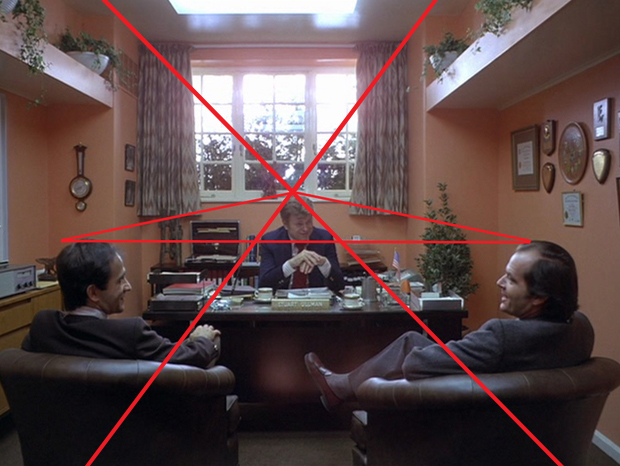
STUART: Uh, did they give you any idea in Denver what the job entails?
Seems it's a question posed with some caution.
JACK: Only in a very general way.
STUART: Well...
29 MCU of Stuart. (6:54)
STUART: The winters can be fantastically cruel and the basic idea is to cope with the very costly damage and depreciation which can occur, and this consists mainly of running the boiler, heating different parts of the hotel (Sha sound at 7:08) on a daily rotating basis, repairing damage as it occurs, and doing repairs...
30 MCU of Jack. (7:13)
STUART (off-screen): ...so the elements can't get a foothold.
In other words, so primal nature won't take over again, which suggests a constant fight against it.
The convivial Jack, eager to make a good impression, earnestly listens and responds.
JACK: Well, that sounds fine to me.
31 MCU of Stuart. (7:19)
STUART: Uhm, physically, it's not a very demanding job. The only thing that can get a bit trying up here during the winter is a tremendous sense of isolation.
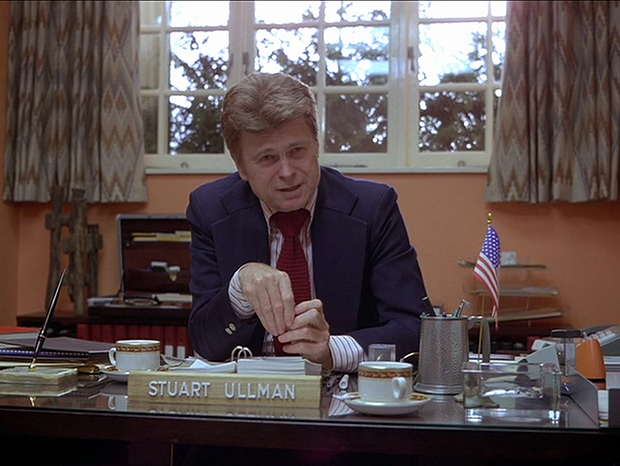
Fig. 23 - Stuart tests Jack on how he feels about the hotel's isolation.
32 MCU of Jack. (7:28)
JACK: Well, that hmmm just happens to be exactly what I'm looking for. I'm outlining a new writing project and five months of peace is just what I want.
33 MCU of Stuart. (7:41)
STUART: That's good, Jack, because uh for some people uhm solitude and isolation can...
34 CU of Jack. (7:52)
STUART (off-screen): ...of itself become a problem.
JACK (confidently): Not for me!
35 MCU of Stuart. (7:57)
STUART: How about your wife and son? How do you think they'll take to it?
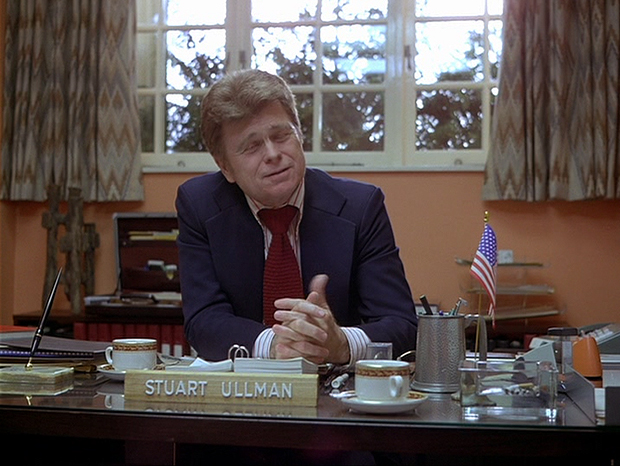
Fig. 24 - "How about your wife and son? How do you think they'll take to it?"
36 MCU of Jack. (8:00) (Sha sound 8:01.)
Jack cockily decides for them.
JACK: They'll love it.
STUART: Great.
Ullman seemingly accepting Jack's insistence too readily.
37 MCU of Stuart. (8:04)
STUART: Well, before I turn you over to Bill, there's one other thing I think we should talk about, I don't want to sound melodramatic, but it's something that's been known to give a few people second thoughts about the job.
Ullman reaches to apparently adjust a pocket of his blazer.
38 MCU of Jack. (8:21)
JACK: I'm intrigued.
STUART: I don't suppose they...
39 MCU of Stuart. (8:24)
STUART: ...uh, told you anything in Denver about the tragedy we had up here during the winter of 1970?
40 MCU of Jack. (8:30)
JACK: I don't believe they did.
41 MCU of Bill. (8:33)
Bill Watson looks quietly, solemnly, uncomfortably on as Ullman begins to relate the story.
STUART: Well, uh, my predecessor...
42 MCU of Stuart. (8:37)
STUART: ...in this job hired a man named Charles Grady as the winter caretaker. He came up here with his wife and two little girls, I think about eight and ten. He had a good employment record, good references, and from what I've been told I mean he seemed like a completely normal individual, but at some point during the winter (sha sound about 8:56) he suffered some kind of a complete mental breakdown, he ran amuck and killed his family with an axe.
43 MCU of Jack. (9:08) The camera on Jack, Ullman continues his story.
STUART: Stacked them neatly in one of the rooms of the west wing, then he uhm well he uh put both barrels of a shotgun in his mouth.
Stacking them neatly sounds more like stacking cords of wood.
44 MCU of Stuart. (9:18)
STUART: Police, well, they thought it was what the old timers used to call cabin fever, kind of claustrophobic reaction which can occur...
45 MCU of Jack. (9:29)
STUART (off-screen): ...when people are shut in together over long periods of time.
(Sha sound 9:34)
JACK: Well, huh, that is quite a story.
He is unsettled, and it has taken him a moment to gather himself and think how to respond.
46 MCU of Stuart. (9:41)
STUART (laughing): Yeah, it is. Oh, it's still hard for me to believe it actually happened here, but it did. And I think you can appreciate why I wanted to tell you about it.
47 MCU of Jack. (9:56)
JACK: I certainly can and I also understand why your people in Denver left it for you to tell me.
Stuart points out how uncomfortable it was to tell Jack about this history, and thus it's Jack's job to tell him it's all right.
48 MCU of Stuart. (10:06)
STUART: Well, obviously some people can be put off...
49 MCU of Jack. (10:09)
STUART (off screen): ...by the idea of staying alone in a place where something like that actually happened.
And faced with the challenge that some people might be put off, Jack rises up to the occasion and assures Stuart he and his wife won't be.
JACK: Well, you can rest assured, Mr. Ullman, that's not going to happen with me. (Jack smiles.) And as far as my wife is concerned, I'm sure she'll be absolutely fascinated when I tell her about it. She's a confirmed ghost story and horror film addict.
(10:30 begin crossfade to Boulder bathroom.)
 22 |
 23 |
 24 |
 25 |
 26 |
 27 |
 28 |
 29 |
 30 |
 31 |
 32 |
 33 |
 34 |
 35 |
 36 |
 37 |
 38 |
 39 |
 40 |
 41 |
 42 |
 43 |
 44 |
 45 |
 46 |
 47 |
 48 |
 49 |
Though many may have the feeling of Stuart and Bill being somehow complicit with evil forces of the hotel, and I think it is staged for us to feel that way, Stuart does warn Bill that it is harsh there in the winter, that it would be very harsh for a family, and that there had been disastrous consequences in the case of the Grady family. This is not hidden. One could actually instead look upon Stuart as having more than fulfilled his obligation in presenting the dangers to Jack, and instead of viewing Bill with suspicion one could instead see him as looking upon Jack with suspicion, that he doesn't get a good read off Jack and wonders why he would pursue a job that would place his family in such isolation.
THE TWO TYPES OF PHOTOGRAPHS IN THE HOTEL

Fig. 25 - The photographs behind Bill are different than the others normally observed.
Most of the photographs observed on the walls of Ullman's office are black and white photos of the type chronicling meetings and luncheons and likely the presence of significant personalities at the lodge, but we also see behind Bill Watson two sepia photos and one wonders what may be their value. The scene is perhaps snowy in them, a highly reflective white, and against that white in the left photo is a dark silhouette of what seems to be an individual. The right photo is even more mysterious, perhaps showing the hedge maze with snow in the foreground, and a peculiar, vague silhouette overlaying that seems to only take on humanoid proportions through the eye looking for such, and yet also lends itself to such. Both photos give a sense of unease, ominous, in particular the way the one of the individual on the left, perhaps a boy, feels to be part of a story line to do with the final hedge maze scene, as if this is a first frame of Danny running to the maze, and the photo to the right is a second frame, following up the first, revealing a monstrous entity pursuing him--but these aren't photos of the final maze scene in the snow as that occurs at night and the hedge maze is also covered in snow.
The center photo above the sepia ones appears to show two individuals on either side of a big fish, and there are a fair share of photos of people showing off their catches of remarkably large fresh water fish. Then there is the photo to the right of it which is difficult to decipher. It gives the appearance of a female form on the left, and checking out an earlier scene (when Bill enters the office) in which the photo is shown in full doesn't help with identifying what it may be, for if it is a female form, where the head should be we have simply a gray expanse. If it's not a female form it may show at the bottom two or three human silhouettes against an unknown background. It may purposefully be an image that gives a double reading. Double readings are referred to frequently in the film.
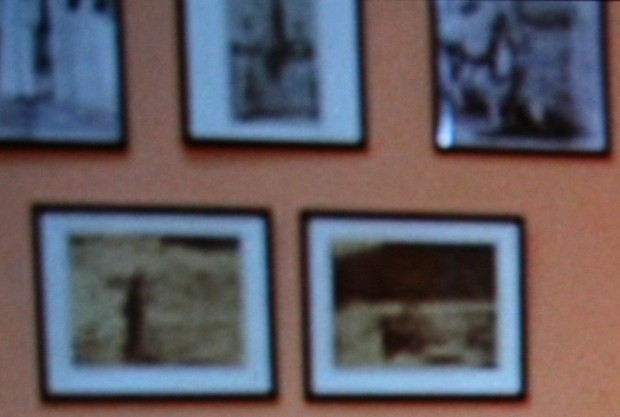
Fig. 26 - A closer look at the photographs behind Bill.
There is another photo of a silhouette in the office but we've yet to have it be introduced (I write of it in the Wednesday section).
Kubrick has done this before, a good example being with an ad of Quilty in Lolita. At first glance one thinks one knows what one is seeing, but a second glance throws that initial reading in doubt when pieces of the ad don't mesh together.
NOTES ON ULLMAN'S DESK AND INCONSISTENCIES
There are three variations of placement of objects on Ullman's desk viewed throughout the interview, and as people seem to like to ask about and discuss these variations, I thought I"d devote a few paragraphs to them.
When Jack enters there's no cigarette in the ash tray. After they have coffee, we see at 5:55 a cigarette in the ashtray and Ullman's white pen pointed toward him (Figure 20); at 6:45 we see the tray is empty when all three men are shown (Figure 22); at 6:58 Ullman's pen is pointed toward him and there is a cigarette in the ashtray; at 7:20 there is no cigarette and the pen is pointed away (Figure 23); at 7:58 the pen is pointed away and there is this time a cigarette (Figure 24); at 8:05 the pen is pointed toward Ullman and there is a cigarette; at 8:26 the pen is pointed away and there is no cigarette; at 9:42 the pen is pointed toward Ullman and there is a cigarette; at 10:07 the pen is pointed away and there is a cigarette.
So there are some shots where Ullman's white pen is pointed toward him and there's a cigarette in the tray; some shots where the pen is pointed away from Ullman and there is no cigarette; some shots where the pen is pointed away from Ullman and there is a cigarette. One can be confident that the scene was shot many times, more than three, but the inconsistencies boil down to it seeming as if, one could propose, there are three different perspectives or versions presented, which could match with there being three people in the room: Bill, Stuart and Jack.
Several times in the movie we have evidence that it seems Jack smokes, but he is never shown smoking, though Wendy is. As the ashtray with the cigarette is on Jack's side of the desk, here again there is the inference that he was smoking before Bill Watson entered the room, during which time we were back in Boulder watching Wendy's untouched cigarette burn away in her ashtray.
As for the splicing together of seeming three separate versions of the desk, Kubrick uses the same technique for the encounter in Room 237, showing seemingly three different versions, while Jack is present in the room and Danny and Dick are shining it, so we are never confident of who was seeing what.
Another thing that people make note of is how Jack's suit appears to be a dark blue or gray and white weave in close-up shots, while in other shots it appears to be brown.

Fig. 27 - The varying tone of Bill's suit is due film processing.
This has to do with the film processing. A simple auto color correction of the suit when it appears to be brown makes it gray and more of a match with the suit in close-up.
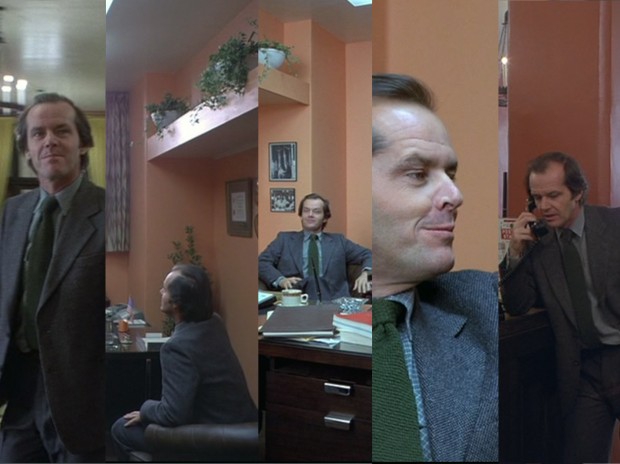
Fig. 28 - The suit autocolored shows it is gray rather than brown.
People also make note that Bill Watson's pants appear to be a solid color when he enters and that they later show a pattern. This may be so. It's difficult for me to tell.
NOTES ON THE TIMINGS OF THE "SHA" SOUNDS
July 2011, I added a long note here on the timings of an ambient, voiced "sha" sound that occurs periodically in the film, and later was alerted that another person had also noticed the same and posted a movie on it previously on Youtube. Our writings on, and realizations of the "sha" sound are independent of each other.
The first such sound, as I've already mentioned, occurs when Jack passes over the spot where he will attack Dick with an axe. Shot 10.
The "sha" is usually briefly preceded with other ambient noises that give a texture of background activity and low background conversation so it seems a part of the natural ambiance. However, though these sounds surrounding the "sha" are not always distinguishable, when they can be heard they are always the same. The "sha" itself is a breathy percussive voicing.
To the best of my knowledge, below are the timings of the voicing:
Jack asks about why the closing of the road, "seems to me that the skiing...". The "sha" follows the word "skiing" at about 6:12. Shot 26.
It occurs very quietly about 7:07 when Stuart is talking about running the boiler and "heating different parts of the hotel". Shot 29.
Immediately after Stuart asks how Jack's wife and child will take to the solitude, during the reaction shot of Jack, the sound occurs at 8:01, just before Jack says, "They'll love it." Shot 36.
There seems a hint of it when Stuart is first talking about the tragedy during the winter in 1970, though I'm uncertain of that. It distinctly occurs when he next says that "at some point during the winter" (the sound is at about 8:55) "he must have suffered some kind of mental breakdown..." Shot 42.
Then as Stuart continues talking about the tragedy and describes it as resulting from a "claustrophobic reaction, which can occur when people are shut in together over long periods of time" the sound is at 9:34. Shot 45.
The two most distinct instances of the sound here are during the two reaction shots of Jack, when he's saying his wife and child will love it there, and then again his reaction to the idea of the tragedy occurring because of people shut in together over long periods of time.
The sound occurs elsewhere in the movie as follows.
20:03 - On "Closing Day" when Jack says they'd had a bite to eat, the "sha" follows. Shot 101.
20:59 - When Stuart tells Wendy the Indian designs are based mostly on Hopi and Apache motifs, there may follow a "sha" sound. Shot 102.
24:02 - Something like the "sha" sound is heard as Ullman says they brought in a decorator from Chicago to refurbish the Gold Room area. Shot 112.
It occurs several times during the kitchen scene on "Closing Day", but there is a good deal of other ambient sound and is not as distinct at times:
25:11 - "Dick (sound) if you're ready to do it now, show..." The scene where Stuart has Dick show Wendy and Danny the kitchen. The sound occurs with a cross-fade from the ballroom to the entrance to the kitchen, audible as we see the word FIRE appearing on the screen, the big lettering on the fire doors. Shot 113.
25:25 - Wendy says, "See you later, hon..." (sound occurs during this). Shot 113.
27:00 - Wendy says to Dick, "We call him Doc sometimes, like in the Bugs Bunny cartoons" (sound of "sha"). Shot 116.
27:20 - It occurs as they enter the C1 storage room. Shot 117.
28:29 - Dick asks, "...you like ice cream, Doc..." (sound). Shot 122.
29:15 - The sound occurs right after Wendy says "Just like a ghost ship, huh"? as we switch over to Dick looking at Danny in the kitchen, right before Dick asks, "Do you know how I knew your name was Doc?" Shot 123.
29:21 - Dick asks, "Do you know how I knew your name was Doc..." (sound). Shot 124.
30:16 - Dick asks Danny, as to shining, "How long have you been able to do it..." (sound). Shot 132.
31:11 - Danny describes shining. "I can't remember everything." (sound). Shot 142.
And then not again until the phone lines are down:
48:36 - When Wendy calls the forest rangers about the downed lines. "Any chance of them being repaired soon?" (sound). Shot 221. The sound is abrupt and a little disconcerting.
A reader has also written to let me know that there seems to be a "sha" sound when Dick is driving through the snowstorm to get the Snowcat. It happens at 1:38:56 when Hal, over the radio, is saying it's a "bad day out there". Shot 427.
One of course wants a meaning for this "sha" and looks for one.
In the Tarot, the Hebrew letter "sh" or "shin", is sometimes said to belong to the Key, Judgment, which fits appropriately with the use of "Dies Irae" as the opening music. I write a little more on the use of this sound in the "Saturday" section.
But is that the meaning for this "sha" or is it something else? I have no idea. There may be no meaning, and these sounds are another example of Kubrick's cycles, perhaps intended to set up an unconscious sense of deja vu. However, since we first heard the "sha" when Jack crossed over the spot where Dick will be murdered, that seems to provide reason enough to believe there could be some meaning in them.
DANNY'S FIRST SHINING OF THE GIRLS AND BLOODY ELEVATOR
50 Crossfade from office interior to Boulder apartment interior. (Crossfade ends at 10:34.)
The background photographs of what seem to be past business meetings at the hotel, on the wall behind Jack, are replaced with brightly colored stickers on what we assume to be Danny's bedroom door as the camera slowly tracks in to an open door opposite through which we can see Danny before a bathroom sink, he standing on a footstool. We briefly see Jack's face merge with the shower curtain then disappear, which may or may not remind of The Wizard of Oz and the injunction to pay no attention to that man behind the curtain.

Fig. 29 - Crossfade from Jack in Ullman's office to the Boulder bathroom.
Prominently on Danny's door is Snoopy gleefully skating, surrounded by a rainbow, while above him floats a helium balloon ascending into the clouds with Woodstock. Where have we seen something resembling Snoopy's rainbow before? Let's return to shot 21 and the red outlining the yellow in a frame on the left wall in Ullman's office.
Back to Danny's door. To the left of Snoopy is Mickey Mouse. An owl sits above the rainbow and another image of Snoopy. To the rainbow's right we have Mickey's sweetheart, Minnie Mouse. Above her is a white bird with a black head ascending, and a raven. There is perhaps a duck, maybe another. Then, sneaking off to the right, we have one of Sleeping Beauty's dwarfs, Dopey, who was a friend of the dwarf, Doc, so Dopey would be a suitable companion for Danny who is also called Doc.
Woodstock, a friend of Snoopy's, wasn't very adept at flying, thus the balloon. He needed some help. Snoopy, though a dog, could understand and translate Woodstock's speech which Wikipedia informs was rendered in the cartoon as indecipherable "chicken scratch" and with symbols such as Z's and question marks etc.--just as various symbols communicate meaning in the film.
But, of course, Snoopy also could not "talk" and his thoughts were communicated via thought balloons and pantomime.
Dopey is a voiceless character. He is endearing to children because he is voiceless and seems to represent their situation in the adult world and its sensibilities that are beyond a child's comprehension.

Fig. 30 - Danny in the Boulder bathroom, seen from his bedroom.
A child having to navigate a world built for adults, Danny stands on a stool before the bathroom sink that is built for adult use.
The bathroom is predominately in pink tones. A mat the color of dark grass wraps about the base of the toilet. A shower curtain is drawn across the bathtub, sunlight shining bright through a high window behind it. The green curtain or valance over the window casts the shower curtain and the room in soft green light. A little rubber yellow duck peeks out from behind the shower curtain to the left, resting on the tub's ledge. Water is heard running in the bathroom.
The light of the unseen window, through the shower curtain, is as prominent as was the light of the window in Ullman's office. The designs on the shower curtain, with the way they push up into the light, visually take the place of the unmanicured foliage in the lower half of Ullman's window. The pink-salmon tone in the bathroom also ties in with the salmon tone on the walls in Stuart's office.

Fig. 22 - Bill, Stuart and Jack in Ullman's office.
An ominous roar of soundtrack enters as the boy stands on the footstool before the sink, playing in the water. The roar rises and subsides. Silence. The roar rises and subsides. Silence. The expectation of something disquieting builds.
DANNY: Tony, do you think dad will get the job?
TONY: He already did. He's going to phone Wendy up in a few minutes to tell her.
51 MS of Wendy in the kitchen. (10:49)
Cut to Wendy washing dishes, still in her union suits and blue overdress, and we now see an Indian beaded belt about her waist. On the counter we see a jar of Peter Pan peanut butter, Smuckers jelly, a canister of grape Koolaid, Fruit Loops, and other items. Hanging above the sink is a green and white dish towel that may read "Golf with the Greats". On top of the refrigerator are a couple more canisters of Koolaid, and several postcards are on its front, one of a golden sunrise or sunset. As she puts up the 2% milk in the fridge, the phone rings and she crosses the living room of the apartment to answer it.
WENDY: Hello.
The television in the background, topped with and surrounded by stacks of books, shows now an old western film rather than the cartoons.
This is the same television as will be observed eventually in the Torrance's suite at the Overlook, but we will not see it until Wendy paces the floor deliberating on how she may have to leave the mountain without Jack.
Is that some art work showing a terrier above the television? Yes, a painting by Alex Colville. I discuss the terrier in this post. On the left wall hangs a style of Japanese art print very popular for the time.
Again, this is a room that was standard for its time and fitting in with the simple construction seen in apartment complexes that haven't any architectural frills. The ponderous wood of the credenza that holds the TV was standard fare. The wicker chair was standard fare. The beiges and browns were standard fare. As far as options for home decorating for the lower middle classes, it was a shitty period. People in the Torrance's station of class would be trying to transition from a more 60s flavor of impoverished student style of decoration to one that connoted some stability, as represented in the heavy credenza and coffee table and end tables, and the matching brown sofas.
That ugly rug peculiarly matches almost exactly with one we picked up in the early 2000s, that we got because it was better than anything else cheaply available and matched up well with some really nice brown brocade covers on our living room futons. It also worked well with the circa 1920 building we were living in. But we also got rid of that rug as quickly as we could.
The disconcerting music, its intermittent roars, continues.

Fig. 31 - Wendy in the living room speaking to Jack on the telephone, the television running in the background.
52 MS Jack in the Overlook lobby. (11:03)
It's Jack on the phone at the hotel's reception desk. Stuart and Bill stand talking beyond. In the far background, between them, we see an older man standing behind the model of the maze, looking over it--the same man who had entered the hall by the elevators as Jack, just after glancing toward the maze, trod upon the spot where he will later kill Dick and we heard the first "sha". A hotel employee who stands at the counter marking yellow sheets is not the same woman who had been at the counter when Jack arrived, and instead may be the individual who had been descending the rear stairway when Jack was headed into the office. A red-jacketed bell hop stands at stiff attention not far behind Jack and is the one who was porting bags at the elevator when Jack was earlier headed to the office.
As Kubrick cut to this shot, a blond woman in white crosses from right to left behind Jack and continues across the lobby. She may be the blond woman who was seated in the grouping to whom another waiter had appeared to be carrying a silver tray service when Jack was earlier in the lobby. We see beyond her an elder woman in tan, who had been in that earlier grouping, and is now seated opposite the lobby's television and catty corner to where the man with the camera had been earlier seated. He's gone.
John Fell Ryan, of the KDK12 Tumblr, has noticed that over the main door there is now a black "shroud" or curtain. Are we simply seeing something that was intended to keep out competitive light during filming, or does it foreshadow Dick's death?
Jack informs Wendy he got the job and has a lot to do so won't be home before 9 or 10. We can see beyond him the TV on which the Summer of 42 movie will later be played, while beyond Wendy, as already noted, we have the apartment's TV playing the Western, a parallel established between the two scenes visually, the television in each shot weighted to screen right, while Jack leans to screen left and Wendy faces to screen right, the scenes dialoguing with one another.
Jack's phone is black whereas Wendy's is white.
JACK: Hi, babe.
WENDY: Hi, hon, how's it goin'?
JACK: Great. Look, I'm at the hotel and I still have an awful lot to go through. I don't think I could get home before 9 or 10.

Fig. 32 - Jack at the phone in the lobby.
53 MS Wendy. (11:13)
WENDY: It sounds like you got the job.
54 MS Jack. (11:14)
JACK: Right. It's a beautiful place. You and Danny are going to love it.
 53 |
 54 |
Notice how the slim art on the left wall in Boulder, and the wider art above the TV in Boulder, complement respectively the slim line of the left column in the Overlook, and the one directly behind Jack. The angle of the reception furniture upon which Jack leans, and its shade, complements the credenza, coffee table and sofas in the Boulder apartment.
55 MCU Danny. (11:20)
Cut to the camera zooming in on Danny facing the mirror in the bathroom, speaking to his reflection. We had already observed he was wearing a red and blue and white raglan sleeved shirt decorated with stars around the armband, but while he was in the kitchen we were only able to see the number 4 above that band. Now we see the number fully, and that it is 42.
DANNY: Tony, why don't you want to go to the hotel?
TONY: I don't know.
DANNY: You do too know. Now, come on, tell me.
TONY: Don't want to.
DANNY: Please...
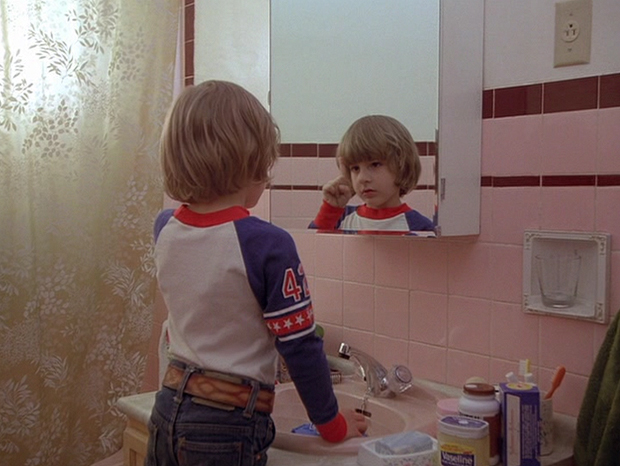
Fig. 33 - Danny speaks to Tony via the mirror in the bathroom.
When speaking as Tony, Danny moves his finger as if it is a puppet.
TONY: No.
DANNY: Now, Tony, tell me.
The dialogue between the two, the boy and himself, brings to mind Ullman remarking on how the story of Charles Grady sometimes gives people "second thoughts".
The camera has zoomed in full on Danny's reflection, his eyes dark, and then his eyes widen and a trace of light from the bathroom window illumines them.
56 MS Overlook hall. (11:43)
Cut to a hall of the Overlook with nearly symmetrically placed brown plaid chairs and radiant heaters, the bright red doors of elevators beyond. The floors read B L 2 3 4. The first elevator is at the L level and the second is at 2. A flood of blood erupts through the left elevator door that has been forced open from the left by the force of the flood which overtakes the hall with such ferocity that the armchairs are swept away from the walls.
We see in that red flood of blood a silvery metallic object at the bottom of the elevator door, protruding through it (I've written a post specifically on this). I believe I recollect reading a number of years ago, in a magazine article in the 80s or 90s, that the metallic object was part of the mechanism for the opening of the door and the shot was so expensive that Kubrick decided not to redo it. But, I have also read the shot was done in miniature because it was too expensive to film otherwise. And I have also read that the shot was done many times with Kubrick searching for the right color red that would look like blood.
The elevators are fairly faithful representations of those at the Ahwahnee Lodge, a difference being that Kubrick's have the arcs above, the half-circles which show story placement.
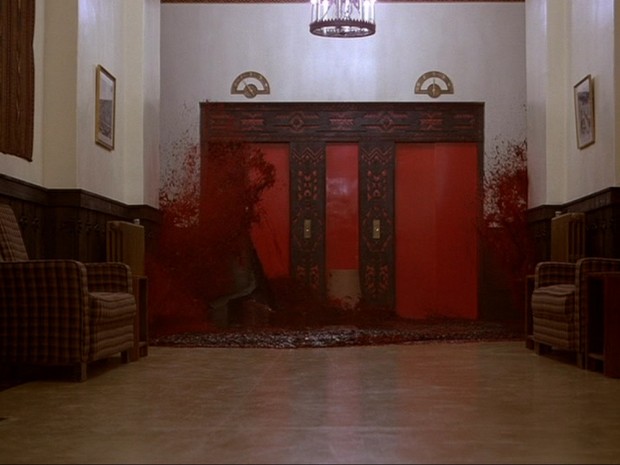
Fig. 34 - The vision of the bloody elevator.
Though the elevators are very close to those at the Ahwahnee, there is a notable difference in decoration.
Note that the Ahwahnee elevators have a variation of the fylfot, which would be American Indian or at least American Indian inspired. It's important, sometimes, what we don't see in a Kubrick film, and this is one of those times. Kubrick has been fairly faithful to other design elements but has left out this fylfot, which could be mistaken as a version of a swastika. Why leave it out? Because post WWII it would be questionable to include it? Or because it is, in a sense, concealed and adds another layer of meaning to the elevators? Anyone familiar with the original design work and the resemblance to the fylfot could indeed read into the blood flowing from the elevators a connection to the holocaust.
57 MCU Two girls. (11:58)
Cut to two girls who appear to be twins. Dressed in light blue dresses with long pink bows, they stand in an unknown hall decorated with blue carpet and blue flowered wallpaper, staring at the camera, clasping hands, reminiscent of Diane Arbus' famous photograph of the twin girls, but while he was photographing for LOOK Kubrick was already taking pictures of girls in similar attire. The dresses, I believe, are two layers of fabric, a swiss dotted blue fabric over white. Or we may just be seeing through the blue cloth the white of underslilps.
One of the girls is vaguely smiling while the other girl is frowning.
Just as the chairs and radiant heaters are symmetrically positioned in the elevator hall, but do not perfectly mirror, the girls are not absolutely identical and not equal in dominance. What this difference in dominance means (or how it functions) will be discussed in the "Saturday" section.
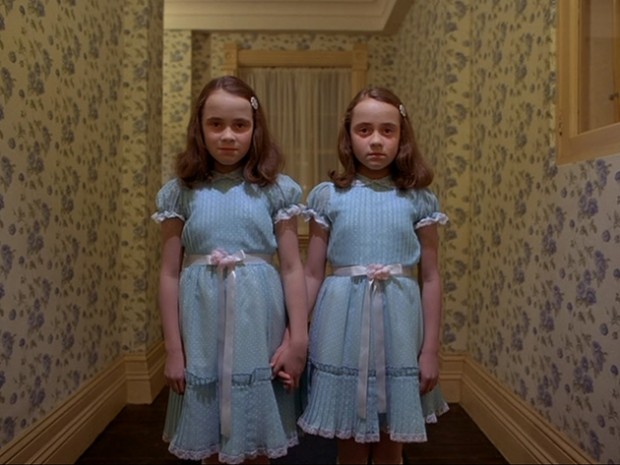
Fig. 35 - The vision of the two girls.
Even when we know what is coming, Kubrick's presentation of the children is almost unfailingly eerie, shown just long enough, but too briefly for us to really register the ways in which the girls are dissimilar. The vision of them is claustrophobic, compressed, the wallpaper's design on the left pushing to the rear, then circling around the girls and pressing back toward the audience.
58 MS Overlook hall. (11:59)
Then there's more gushing blood splattering the walls outside the elevators.
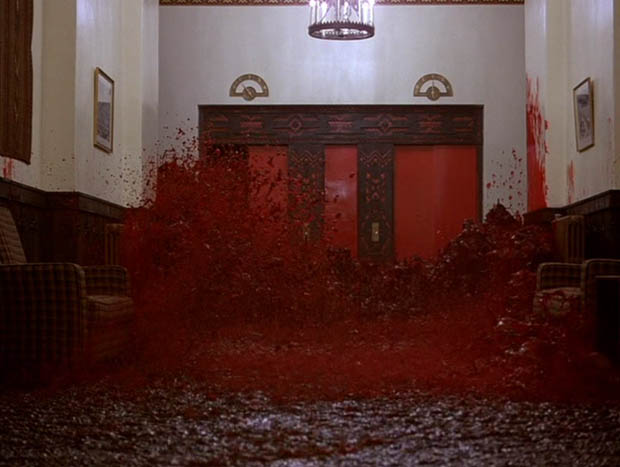
59 CU Danny. (12:02)
A shot of Danny's mouth wide open in horror. He's dressed in a winter sweater rather than the lighter weight raglan.
The viewer perhaps believes Danny is seeing the elevator, the girls, and then himself screaming. That's the impression given. But it's also likely that the viewer transposes Danny in the sweater onto the Danny before the mirror and registers Danny as silent screaming in response to what he sees. Just as with the happenings later in Room 237, we have no assurance what it is that Danny sees. A good guess is that he does see the elevator and the girls. I don't think it's as certain that Danny sees himself. But perhaps he does. And, if he does, he would see himself wearing this sweater and shirt, and it's to be questioned then who later chooses this sweater and shirt for him on the day that Dick is killed. Did his mother choose it or did Danny himself choose it? If Danny chose that attire, one could compare that choice to Danny being himself the one to write on the bathroom door the word REDRUM, just as he had seen it in his vision--and yet he writes it, it doesn't simply appear, so one could think of it as premeditated as well as an inescapable foregone act/conclusion. A question presented by the movie is what isn't destiny, what isn't a foregone conclusion, and what prevents history from repeating itself?
60 MS Overlook hall. (12:03)
Cut back to the bloody hall. The blood covers the camera and the scene goes black. (12:07)

After a moment, we hear a voice.
THE DOCTOR: Now, hold your eyes still so I can see.
These are clean cuts, no crossfades. Because of their near symmetry, and because the scenes are slightly off and not perfectly symmetrical, I thought it might be interesting to overlay the elevator hall with the hall of the girls and see how they relate. The far left pillar in the elevator hall fits neatly with the left pillar behind the girls.

Fig. 37 - Not in the movie. My superimposition of the girls and the bloody elevator, showing spatial/design similarities.
When you overlay then the elevator hall with the next scene of Danny's bedroom, the bathroom door fits neatly into the left up to the 2nd bank of wall, and the far right of the elevator aligns with the bedroom's right corner. Beautiful. Composed...just...so. This is more than reliance on single point photography for connecting scenes. Perfect alignment of some architectural features, from one shot to the next, may function to make transitions less jarring, creating less interference with an established mood. As if we have a psychic after image from one scene to the next at work, and one may also then have the sense (perhaps not consciously) that they all fit together. Because they do.
I have also written a post specifically on this.
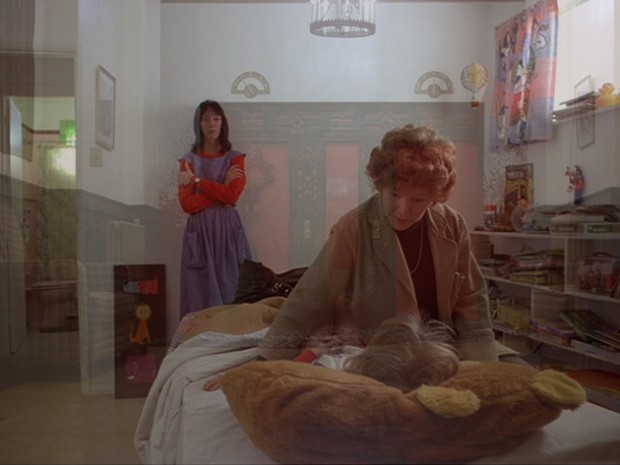
Fig. 38 - Not in the movie. My superimposition of the bloody elevator and Danny's bedroom, showing spatial/design similarities.
Kubrick's showing us this vision early on in the film means that through the rest of the movie we will be waiting for the reappearance of these apparitions. We will be looking, constantly, to see where the elevator hall fits into the labyrinth of the Overlook.
THE RAINBOW IN DANNY's ROOM AND AND HIS BLACK-OUT COMPARED TO A CLOCKWORK ORANGE AND THE INVITATION TO THE END OF THE RAINBOW IN EYES WIDE SHUT
The rainbow may seem a minor detail, being a sticker on a child's door, and a popular symbol so deeply embedded in culture that not much thought is devoted it, but the rainbow also features prominently in Eyes Wide Shut and demands consideration here.
The rainbow has become a symbol of happiness, good luck, peace and the promise of a pot of gold at its end for those who can find it. The darker side is often not considered, of a wrathful deity unleashing a flood upon the earth to destroy humanity, even animal life. In the Jewish and Christian myth, Noah (NVCh, meaning "rest") and his family alone were preserved in an "ark" on which were also two of each kind of animal. This ark eventually came to rest on a high mountain. In some versions of Greek myth, the flood followed Lycaon's slaughter of a child of his and his serving the child, mixed with other sacrifice, to Zeus who had masqueraded as a mortal, which is a not infrequent motif in ancient myth, deities infiltrating the human sphere in the guise of humans, sometimes as a test to see how they will be treated and then accordingly punishing or rewarding the human host.
Later, the Overlook will be referred to as a ghost ship, and I believe with the opening shot of the island in the lake, and the rainbow followed by a flood of blood, we have, with the Overlook, a link being forged with certain aspects of a flood and rainbow story, which I'll reserve discussing until later. Both the Hebrew and Greek words for the rainbow harbor a relationship with the eye, and I'll note here that the Greek iris, iridos, a rainbow, lily, iris of the eye, is given as originally meaning a messenger of the gods as personified by the rainbow. The rainbow on the door of Danny's room directly precedes Danny's vision via the mirror, and after the vision Danny's eyes are highlighted during the doctor's examination.
The Fleur-de-lis, meaning the flower of the lily, doesn't appear in The Shining but does in a number of Kubrick's other films, and again brings in the rainbow even when no rainbow is apparent. Take for instance A Clockwork Orange in which we have a couple of instances of Fleur-de-lis, the first being at the home of the Cat Woman, on the stoop of which Alex is "blinded", leading to a dramatic turn in Alex's life with the Cat Woman's death. Perhaps it's notable that Alex wore eyes on the cuffs of his shirt, and that these eyes disappear immediately after the blinding, even when he is still dressed in the same clothing. The next instance of the Fleur-de-lis is when Alex is locked in an attic from which he attempts to commit suicide,, the wallpaper of it covered with Fleur-de-lis. After Alex jumps out the window, the screen goes black, and next we see him he is waking at the hospital, so broken he's wrapped up about as tightly as a mummy, a bright light suspended directly above his eyes. A similar arrangement occurs here. The rainbow precedes a focus on Danny's eyes during his visionary experience, after which all goes dark as his vision is covered with the blood flowing from the elevator. This causes a period of blackness, just as is had in A Clockwork Orange just prior Alex's waking in the hospital. The next scene in The Shining has the doctor examining Danny's eyes with a bright light and saying, "Now, hold your eyes still so I can see."
Eyes Wide Shut has near its beginning an invitation to go where the rainbow ends. That invitation follows a story of Bill removing something from a woman's eye, the invitation even accompanied by a woman remarking on how she bets he works too hard, think of all the things he misses--just as all work and no play make Jack a dull boy in The Shining.
Kubrick's films are full of repetitive motifs.
THE AWAKENING OF JACOB
Another myth is brought in at this point as well. According to the Drummerman site, the music played during Danny's vision is Krysztof Penderecki's, "The Awakening of Jacob" which concerns Jacob falling asleep and having a terrifying dream of angels ascending and descending a heavenly ladder. Upon waking, he named the rock, which had served as his pillow, Bethel, the House of God, house being BTh, beth, and god being AL, el. The place was first called Luz, so its original name was supplanted.
Significantly, Jacob was a twin, but not an identical twin. His hairy, red brother was named Esau. Esau would lose not only his birthright to Jacob, but his father's blessing as well, through Jacob's guile and his deceit of masquerading as Esau in order to procure the blessing. Kabbalistically, Jacob corresponds with the mystic, inner life, while Essau's is that of physical action. The pair are an expression of the idea of a struggle of universal forces ever in conflict, and it's held that never can both exist on the same plane. The prophecy concerning them was, "One people will be stronger than the other." The Talmud said of them, "When this one falls, the other one rises." They are the very definition of balance and imbalance. When one ascends, the other must descend and vice versa, a matter of physical law. Is the desirable state one of equilibrium, such as had at the equinoxes? And, if so, how long can such an equilibrium be sustained, and what throws it out of balance? With the equinoxes, it is the simple incessant progression of time that brings balance and then imbalance.
As per the use of "The Awakening of Jacob" here, the bath could take the place of BTh, beth, and the elevator may be the staircase of Jacob's dream. Whatever, we have in the bathroom's mirror the film's first instance of second sight, of oracle, access to knowledge not normally held, and Kubrick appropriately annotates it with music concerning an awakening from a dream.
"Now, hold your eyes still so I can see, " a female voice says in the black--and it's a very normal, stock request but enigmatic when one considers that much of the film has to do with Danny's second sight.
42
We haven't seen the number 42 on Danny's shirt until just previous his vision, while he was looking in the bathroom mirror. We had only seen "4" on his sleeve in the kitchen.
Keeping with the myth of Jacob, when Jacob awoke from his dream, the story goes that he thought, "Surely the Lord is in this place, and I was not aware of it. How awesome is this place! This is none other than the house of God; this is the gate of heaven." And he made a memorial pillar of the stone which had been his pillar.
The word for Lord here is IHVH. The Tetragrammaton is the 4 lettered name of God which is forbidden to be spoken for fear of blasphemy, which amounts to a an imposition of silence. The four letters are I H W H, or Yod, He, Waw and He (a silent letter). Tetragrammatos means having 4 letters. The gematria for the name in this short form is 26. But 42 is also associated with it. How so? It is through the three consonants of the name spelled out: IVD HH VV. These have a gematria of 42. I-10, V-6, D-4, H-5.
My take on the use of 42 has been that it is possibly referring to the Tetragrammaton, and it is interesting that the use of 42 coincides here with the music for the Awakening of Jacob.
Jacob's dream ladder is a key component of Qabalism/Kabbalism, understood as representing the Tree of Life and its ten Sephiroth.
The word for Jacob's pillow is mra'ashah, something like MRAShH, headpiece, coming from an idea of headship. A word for mental vision is MRH (mareh), sometimes translated as mirror, and is also sometimes MRA. Suiting, then, that Danny stands on a footstool (a ladder) before a mirror when he has his vision. We will be returning to these ideas as they weave in and about the film.
Whether or not there was any intention behind the use of certain numbers in the film, such as 42, is one thing. My greater concern (with a couple exceptions) is keeping an eye on what Kubrick's choices of music bring to the film in the stories suggested by their titles, and the same too with certain important symbols in the film, the stories often associated with them that are transported into the film by virtue of the use of the symbol and the mythology attached to it.
42 is a number that Kubrick uses repeatedly throughout his films.
CARSON CITY
In a few minutes we will see a painting in the Boulder apartment of a horse running down a railroad track toward an oncoming train. Earlier, when Danny was watching the Roadrunner, Wendy mentioning it was hard to make new friends and Tony protesting he didn't want to go to the hotel, we had heard the sound of a train.
The Kubrick Corner has a fascinating clip extracted from a movie called Carson City which is the one that happens to be playing in the background during the scene in which Wendy answers Jack's call from the hotel.
The plot of Carson City concerns a man named "Silent Jeff" who is hired to build a railroad between Carson City and Virginia City. The people of Carson City are worried the railroad will attract bandits--or, rather, "Big" A. Jack Davis and Jim Squires have reason to not want to see the railroad go through. They are partners in the worthless Golden Elephant Mine. They also happen to secretly be the bandits who have been attacking the money bags stage coach, and don't want the train to end this source of income. So they do their best to turn the town against the idea of a train. In a foiled plot to stop delivery of the drill that is to be used for boring a tunnel though a mountain for the railroad, Squires kills the driver of the wagon that carries the drill. The wagon driver scratches out on the ground the letters S O U but dies before finishing the name. The editor of the town's paper realizes the letters are likely S Q U, and that Squires is the murderer. When the editor goes to the Golden Elephant Mine to investigate, he is killed by Davis, who sneaks the editor's body back into his office, and the rumor is begun that, as the editor was against the railroad, it was someone connected with the railroad who killed him.
The Kubrick Corner shows that continuing from the point where we see the movie behind Wendy in the living room, running it in real time, to when the blood is shown gushing through the elevator shaft in Danny's vision, it matches up with a discussion in Carson City on a leak having been found in the tunnel that's then under construction. Silent Jeff reveals that there is not only one tunnel, but that a second tunnel has also been blasted and wants to check the second tunnel to see if it too is leaking. "Two tunnels?" The bank owner who's told this is surprised by the fact, and it's explained to him that the reason there are two is that they are being drilled from opposite sides of the mountain to meet in the middle.
NOTE: Jay writes to me: "Speaking of mining, just watched 'Carson City' for the first time, today, and I'd like to respectfully offer a slight correction to what you cite in your analysis, for you indicated that in the scene on the telly in Boulder, Randolph Scott's character is talking to a conspirator, yet it is actually the scene where Jeff has been surveying one bore (the transit tool is visible in the scene) and is now talking to the banker who hired Jeff and is bankrolling the railroad project and is there to complain about the negative press the project has been garnering."
Kubrick Corner further points out that the Avis car rental pamphlets on the counter beside Jack could be taken as echoing the name Jack Davis. And, of course, we have later Jack crashing through the door of their suite's bathroom with his axe and announcing, "Here's Johnny!" as in Johnny Carson. One could think of Jack's axe as corresponding with the drill in the Carson City movie.
We have first the sound of the train while Danny eats lunch with Wendy who is smoking Virginia Slims cigarettes (the railroad was being built between Virginia City and Carson City), then we see a couple of very brief clips of the Carson City movie, and after Danny's black-out we view the painting of the horse running down the track toward the train. Though the audience won't know about Carson City, Kubrick has embedded bits of information so that The Shining anticipates and then complements the film on the television as it runs.
We can go back even farther than the sound of the train to the film's opening and the curious activity around the the tunnel through which the VW passes as it travels up the mountainside, that tunnel bookended by cars that have pulled over to the side of the road, a white family station wagon preceding it and the two-tone color auto following. There are other linkages and so we'll be coming back to this later. But it becomes perhaps relevant that there are two tunnels on the Going-to-the-Sun road in Glacier park, the west and the east, each on either side of the Continental Divide. It could be that with the use of the park's west tunnel, in the opening, Kubrick was already referring to the film Carson City. Or he is using the Carson City film to comment on those east/west tunnels and the divide between them, which is drilled through in Carson City.
One must wonder if Kubrick was aware that Stephen King, at the age of 4, had witnessed a friend being struck and killed by a train, was mute and unresponsive for at least a day because of it, professes no memory of the incident, but it's been proposed this event may have helped inspire his predilection for writing horror.
A train is mentioned in King's book, Hallorann relating that due his shining, when his brother was killed in a train derailment, he was aware of it before anyone had a chance to tell him.
I am particularly interested in the train because Kubrick has used trains in his other films. In A Clockwork Orange, in Alex's prison room, is a comic book with a picture of a train about to collide with an old horse and buggy, but it is modern era and the comic book story concerns a photographer marveling over the ghost buggy and his being able to take a photo of a past event inserting itself into the present. The idea of the past meshing with the present certainly fits well with "shining".
Kubrick even uses the railroad in conjunction with a revisitation of events, something happening twice, in Eyes Wide Shut.
The painting of the horse and railroad, done by an Alex Colville, is supposed by critics to be an expression of the question of whether destiny can be altered. Which, of course, is a great concern of this film. Can destiny be altered? Can the bloody murder that Danny fears, which would be a duplicate of the Grady family killings, be avoided? If so, how? Do people operate in a free will universe or a mechanical one?
This tunnel that is blasted through from two ends, meeting in the middle--is Kubrick making also reference to Hezekiah's serpentine tunnel that was dug from opposite directions to meet in the middle, channeling water from the upper spring of Gihon to the lower pool of Shiloah?
THE FOX TERRIER AND THE HORSE
The painting of the horse running down the railroad track is by Alex Colville, "Horse and Train", from 1954. On the opposite wall is the "Woman and Terrier" painting by Colville, from 1963. Kubrick's inclusion of "Woman and Dog" returns us to The Killing. At that film's end, a woman stands beside a fence at an airport, holding a dog that she treats as a child. It leaps out of her arms and pursues the motorized cart that carries the suitcase holding the money from Johnny's robbery of the racetrack. The cart swerves to avoid the dog, the case falls, bursts open, the money spills out and is swept across the tarmac by the plane's propellers. This scene, not in the book, seems to have been inspired in part by a photo Kubrick took for LOOK magazine, in 1948, of a woman and her dog at an art auction, this woman appearing to be the same one who held the dog in The Killing.
From my analysis on The Killing:
At the end of The Killing, the dog as child is certainly there, and the picture of the dog and woman in The Shining likely speaks to Wendy and Danny. A dog is not always a dog, as we know from the dog in Fear and Desire, which was named Proteus, after a shape-shifter, and able to come and go as it pleased between opposing sides. It was the dog of the General, but it also visited those who crashed behind enemy lines (another plane). Just as Proteus crossed boundaries, so did the dog escape the boundary that held everyone else back at the fence at the airport in The Killing, so does Danny, while Wendy is on the phone before the dog painting, cross a boundary with his vision in the bathroom mirror.
Another indication that Kubrick is referring back to the dog in The Killing is that the movie playing under the painting of the woman and the terrier is Carson City. As usual, with Kubrick, elements work on different levels. What is happening in the film has some synchronicities built in with Danny in the bathroom, but Carson is also a name that is in The Killing. After Johnny deposits the florist's box at the bus station, he goes to Mike's and drops a key for him in his mail box (shot 154). At 11:15 a.m., Mike picks up that key (shot 165) then goes to the bus station to get the box. What is the name to screen right of Mike's mail slot? Joe Carson. And what is the bus station but a Greyhound bus station. Again, we have a dog. In this instance Carson is the link between the dog painting in The Shining and the Greyhound bus station in The Killing.
Shots 51 and 54 in The Shining, in which we see the dog painting behind Wendy, frame not only Danny in the bathroom but also Jack at the Overlook telling Wendy how beautiful the place is, how much she and Danny are going to love it, and how he won't be home until 9 or 10. This corresponds with the Greyhound bus scenes being a frame for Mike's promise to Ruthie that they'll be rich soon, that they'll have a fine house, and then letting her know he won't be home until about 10. She asks him not to drink too much beer and Mike promises he won't be doing any drinking. When Jack tells Wendy he won't be home until 10, Kubrick is certainly thinking back to The Killing, and also with the problematic drinking. For what happens immediately after this in The Shining? After Danny's vision? It's then we learn that Jack is an alcoholic. We also have a discordance of dates on which he supposedly stopped drinking, just as now have a problematic timeline in The Killing....
Here's a post devoted to the subject.
THE SECOND INTERVIEW
SUSAN SONTAG'S ILLNESS AS METAPHOR - YOUNG JETHRO AND THE MAZE - THE WORKS OF INA SEIDEL AND THE THIRD REICH
61 MS Danny's bedroom. (12:13)
Lights up. Danny is lying on his bed on a fuzzy bear pillow, a doctor bent over him, examining him, as Wendy stands to the rear, clearly anxious. The music quickly fades, replaced with the sounds of traffic. The horror of Danny's vision past, we return to ambient sound, nothing mysterious.
On the window sill of Danny's bedroom is a yellow rubber duck of the same kind we viewed in the bathroom, but the angle of the shot is such that though the bathroom is visible we're unable to see if the duck is still in that room (I would imagine it's not). Curtains decorated with Snoopy and friends hang on Danny's window. Beside Wendy, leaning against the wall is a painting of a cartoonish red and blue dog, a lion, and a purple elephant. Against the right wall are shelves stacked with books, puzzle boxes, a lunch box, a green and yellow tiger image, and a play figure of Goofy. A 3-d paper fold-out of a helium balloon hangs from the ceiling. On the ground below the helium balloon figure we see a multi-colored striped object. So, in effect, various symbols we had first been introduced to on Danny's door are now here in the physical, in Danny's room, though also still represented symbolically. As in, the helium balloon has become 3-d but it is still a representational toy. It is a kind of mirroring, but things are not exactly the same. As if to remark on this, we have also the duck moving from the left, in the bathroom, to the right, on the windowsill.
Referring back to The Wizard of Oz and its over the rainbow adventure, we have at the beginning here the potential of a dream story that makes use of elements of real life and can be accepted as having actually occurred at least for the journeying dreamer.
The lunch box is appropriately labeled "Emergency" and shows, I think, firemen. In the background is a book titled Teeny Weeny Adventures. In the lobby, during his phone call, Jack had been standing beside AVIS brochures advertising "Experience a Colorado Adventure" with a building of Spanish Mission style architecture set against the mountains.
Wendy, dressed in her red and blue, is bookended left and right by two dogs in blue and red, the dog in the picture, and Goofy, as if to reinforce a relationship between her and Goofy, who became eventually, in American mid 20th century culture, a kind of reassuring Everyman figure attempting to navigate a confusing world. In these opening scenes, it does seem as if Kubrick has emphasized some of Wendy's (Shelley's) striking features, creating a kind of caricature of her, as is done with cartoon figures. Later in the film her appearance normalizes. In the Boulder apartment she is stretched out, lengthened with the red union suits and her eyes are made conspicuously wide, a common feature of cartoon figures. Why would Kubrick do this? I don't know, but Danny, surrounded in Boulder by his toys and cartoon figures, is very much in the fantasy world of the child, and his relationship to his mother may be somewhat described here in her being on par with these toys and cartoon figures, which is not to denigrate her but to point out how "real" such fictional figures can be to a child. There is little distinction between reality and the fantasy that cartoons and toys inhabit, and so it is with a child's mind until about the age of five when they begin losing their baby teeth and their thinking becomes less fantastic and more reality based. With the move to the Overlook, Danny is removed from his more comforting bedroom, with its playful figures, to the world of the lodge. These stickers and a number of toys left behind, something is going to step in to fill the vacuum.
The move of the duck from the bathroom to the bedroom window is a fun tidbit, and one can perhaps concoct a story for its journey if one superimposes the bathroom scene over this one. Doing so, we see Snoopy's little yellow bird friend, Woodstock, using the helium balloon to fly away from the tub in the direction of the window. Note also that the right corner of the room lines up perfectly with the right door jam of Danny's room in the prior shot, which perhaps indicates intentionality on Kubrick's part, the artistry of successively blending multiple scenes together physically and perhaps thus psychologically.
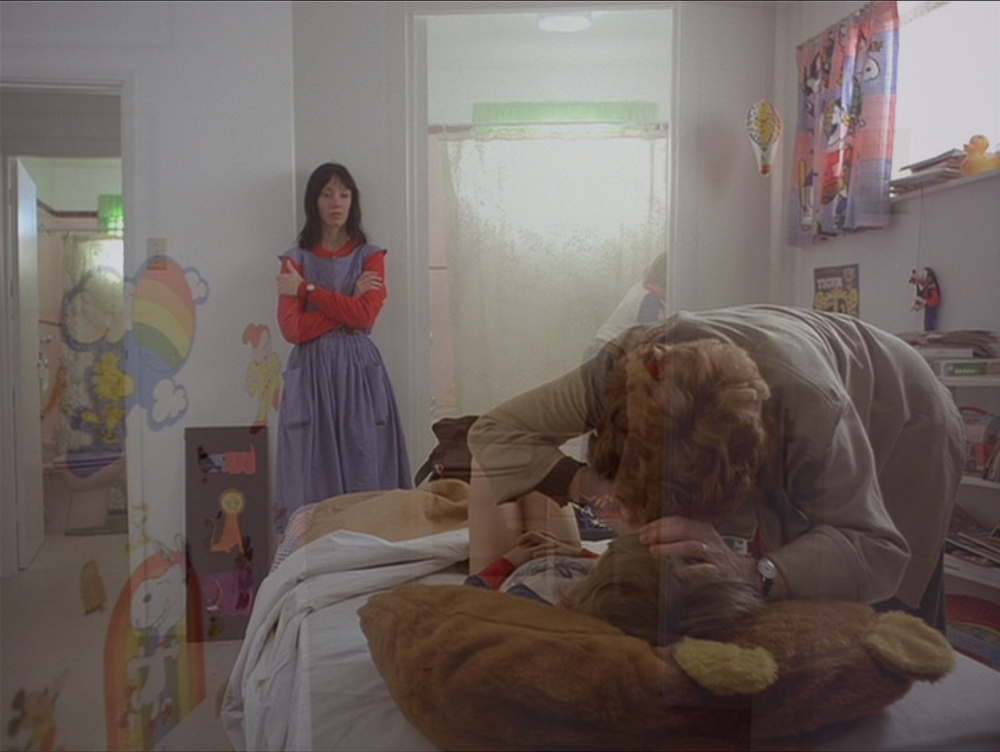
Fig. 39 - Not in the film. My superimposition of the previous bedroom/bathroom scene with this one.
THE DOCTOR: That's good, now the other one. (The doctor switches to examining Danny's left eye.) Good boy.
We hear a horn honk outside.
The doctor sits down next to Danny.
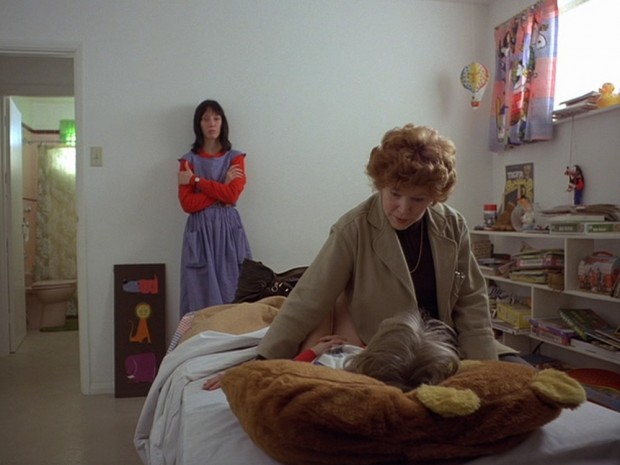
Fig. 40 - Danny questioned by the doctor.
THE DOCTOR: Now, Danny, when you were brushing your teeth, do you remember if you smelled anything funny or saw any bright flashing lights or anything at all strange?
Which suggests she may be wondering if he's epileptic.
62 MCU Danny. (12:42)
DANNY: No.
THE DOCTOR: Do you remember when you were brushing your teeth?
DANNY: Yes.
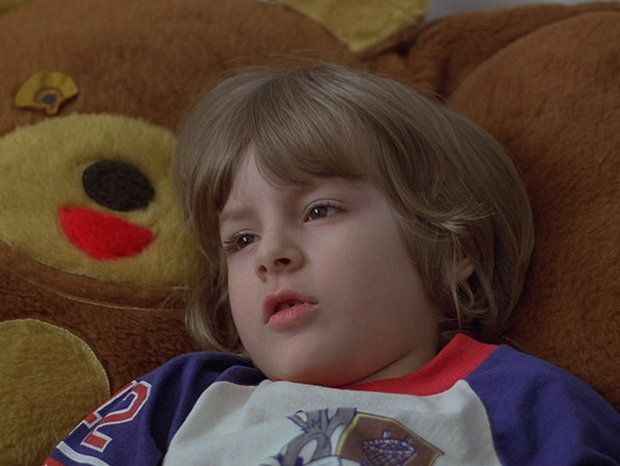
Fig. 41 - Danny resting on his bear pillow.
63 MS Danny's bedroom. (12:51)
THE DOCTOR: What's the next thing you remember, after brushing your teeth?
64 MCU Danny. (12:56)
DANNY: My mom saying, wake up, wake up, wake up...
65 MS Danny's bedroom. (13:02)
DANNY: ...Danny, wake up.
THE DOCTOR: Now, Danny, can you remember what you were doing just before you started brushing your teeth?
66 MCU Danny. (13:12)
DANNY: Talking to Tony.
67 MCU Doctor. (13:16)
THE DOCTOR: Is Tony one of your animals?
68 MCU Danny. (13:19)
DANNY: No, he's a little boy that lives in my mouth.
69 MCU Wendy. (13:23)
WENDY: Tony is his imaginary friend.
THE DOCTOR: Oh...
70 MCU Doctor. (13:27)
THE DOCTOR: If you were to open your mouth now, could I see Tony?
71 MCU Danny. (13:32)
DANNY: No.
72 MCU Doctor. (13:34)
THE DOCTOR: Why not?
73 MCU Danny. (13:36)
DANNY: Because he hides.
74 MCU Doctor. (13:39)
THE DOCTOR: Where does he go?
75 MCU Danny. (13:42)
DANNY: To my stomach.
76 MCU Doctor. (13:44)
THE DOCTOR: Does Tony ever tell you to do things?
77 MCU Danny. (13:49)
DANNY: I don't want to talk about Tony anymore.
So, does Tony tell him to do things? Kubrick raises that question for the audience and leaves it to linger.
78 MS Danny's bedroom. (13:56)
THE DOCTOR (sympathetic): OK, that's fine. (Standing.) All right, Danny. Now, I'm going to ask you to do me a favor and stay quietly in bed for the rest of the day. OK?
DANNY: Do I have to?
DOCTOR: Yes. I'd like you to.
WENDY: We're just going to go in the other room for a few minutes and talk, then I'll come back and check on you, 'kay?
DANNY: Okay.
DOCTOR: Bye.
Before we continue on and out of the bedroom, to review the conversation, Danny has given in reverse order what happened in the bathroom. He was not speaking to Tony before brushing his teeth. We'd no idea during the bathroom scene that he had brushed his teeth, at that point he was playing with a toy in the sink. For all we were aware he could have just gone in to use the bathroom, was washing his hands afterward and became involved with playing in the sink. But it was during Danny's speaking with Tony that he blacked out. Here, he's given as instead having spoken with Tony and then having brushed his teeth, which is when he blacked out.
 63 |
 64 |
 65 |
 66 |
 67 |
 68 |
 69 |
 70 |
 71 |
 72 |
 73 |
 74 |
 75 |
 76 |
 77 |
 78 |
79 MS hallway. (14:25)
We briefly see down the hallway, beyond Wendy and the doctor, a door open on another room, a print of boy and girl bears on the wall above a blue and white hair dryer and a chair below that.
WENDY: Shall we go into the living room?
DOCTOR: Yes.
Wendy directs the doctor into the living room, past the painting of a horse running down a track toward an oncoming train.
The way that the camera tracks the pair emerging from Danny's room and continuing to the living room is curious as it skews the relationship of that hall with the remainder of the apartment. The hall is vertical to the kitchen and living room but the camera gives the feeling it instead runs parallel the kitchen. As we're not shown the hall again there is a vague disorientation about how parts of the setting fit together.
Below is the best I can quickly draw up as an approximation of the layout of the apartment.

You'll notice that Kubrick's design for the apartment has perhaps shed the balcony that seems to go with each apartment in the complex where the Torrances supposedly live. Also, the kitchen appears deeper than the bathroom, which would cause some peculiarities with the interior layout and the plain block style exterior of the buildings. We're not shown the master bedroom and the room at the end of the hall is too small to be it so I'm making a guess of its proximity. There seems space for another room between Danny's room and the living room. There are windows on three sides. Just thought I'd draw this up as I always want to think of the hall to the bedrooms as running parallel the wall of the kitchen with the plumbing fixtures though it's not.
To comment again on the bathroom before continuing on. I said earlier that Kubrick did a nice job of lifting this apartment's style/furnishings straight out of the the late 70s. Except for the bathroom. This apartment complex's exterior looks to be from the 70s and the bathroom has beautiful ceramic tile work in it that has probably not been present in any lower and lower mid tier apartment complex since the 60s. There's even a lovely ceramic inset for a cup! No way one would find this kind of workmanship in a 70s student/family apartment complex. Ceramic tile disappeared completely about this time and where ceramic tile was once essential (such as with nicer bathtubs that had showers) the ceramic was replaced with fiberglass and plastics.
I've commented on the furnishings of the apartment before, but will elaborate a little more. The furnishings and the dining room and living room are spot on. Classic 60s design is down at the Salvation Army waiting for a new home, or rotting in a landfill, replaced with cheap 70s ugly lamps and faux wood coffee table and end tables. The bourgeois essentials of the matching sofa and side chair are present, but they've tried to spice up the place with a wicker chair from some place like Pier One. The newest furnishings would be the white dinette set and chairs. The masses of books make due with utility shelves, if they ever make it out of the box. The curtains could only be cheaper if the Torrances had used the thin bamboo blinds that were popular for the time. Kubrick's choice of the horizontal lines for the curtains seems intentional to counter the zigzags in Ullman's office.
WENDY (indicating a seat): Please.
DOCTOR: Thank you.
The doctor sits on the brown sofa under the hazy light of a high window, reminding of similarly red-haired Ullman seated before the hazy light of the impossible window at the Overlook, and Wendy takes a seat on a matching chair that corresponds with Jack's relationship with Ullman during the interview at the lodge. Stuart Ullman's hair is red and his hairstyle is similar to this unnamed doctor (played beautifully by Anne Jackson) whose hair is also red, and their coloring and builds are much the same. We are able occasionally to see her watch and that it reads either 5:55 or 6:00.
The end table and the coffee table are stacked with books, as is every nearly every available surface. Prominently placed on the coffee table is the New York Book Review and beneath it another issue showing Susan Sontag's Illness as Metaphor, in which she wrote of how society, by attributing certain illnesses to personality types and treating illness as repressed emotional content, unfairly stigmatized the victims of illness.

Fig. 42 - The doctor and Wendy in the living room.
Still, is Kubrick placing here a reference to Sontag's book for sake of its message, or instead for sake of its title, prompting the viewer to wonder about metaphor and illness as regarding Danny's fainting spell. Or perhaps Jack's alcoholism--for we are soon to discover he is an alcoholic.
The title for this section is "The Interview" and we tend to think of this title as exclusively pertaining to Jack's interview at the Overlook, but now we also will have this doctor interviewing Wendy. So, there are two interviews, and perhaps even three if we count the doctor speaking with Danny. In Stuart's interview, he has the uncomfortable business of relating the story of the murder, while in the interview with the doctor it is Wendy who will relate an uncomfortable story in response to the doctor's questions.
I love how the shade on the lamp between the doctor and Wendy is slightly askew. Kubrick has nailed the appearance of a certain type of apartment of the time.
THE DOCTOR: Mrs. Torrance, I don't think you have anything to worry about. I'm quite sure there's nothing...
80 MCU Wendy. (14:46)
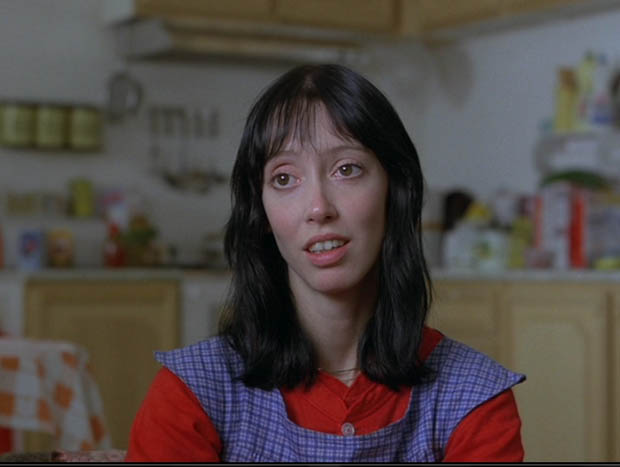
THE DOCTOR: ...physically wrong with Danny.
Relieved, Wendy sighs and smiles.
WENDY: Yeah? Oh, yeah, he seems absolutely fine now but you should have seen...
81 MS Doctor from Wendy's side. (14:55)
WENDY: ...him.
THE DOCTOR (laughs): I know. Kids can scare you to death.
We see on the end table beside her a book titled The Wish Child, and I will return to that in a moment. Another book is Young Jethro by Roy Clews. Jethro was the father-in-law of Moses but I've found a very brief description of the plot of the book and it seems to be about a needle mill worker in the UK in the 19th century. Because of the importance of the maze to the plot I'm going to lean toward thinking perhaps the book was chosen due the coincidence of the needle and the word clew, as a clew of thread was the ball used by Theseus to find his way out of the labyrinth, and is the origin for the word "clue". That Roy Clews was the author of a book about a needle mill worker (a needle guides thread) is a nice bit of serendipity.
We see on the sill The House of Brede by Rumer Godden, which concerns a professional woman, Philippa, who at the age of 42 leaves secular life and becomes a nun in a contemplative order.
Looking up The Wish Child, by Ina Seidel, I see that The Kubrick Corner Has already noted:
Behind the doctor are two books, "The Wish Child" and "The Manipulator". "The Wish Child" is perhaps symbolic of Danny, "The Manipulator" of Jack and the Hotel. As Wendy smokes, her cigarette resembles an Indian peace pipe.
Note: "The Wish Child" was written by Ina Seidel, author of "Das Labyrinth". "The Wish Child" is about 2 young children during the Napoleonic Era.
Of course it's significant that Kubrick would choose this book by a woman who also wrote on the labyrinth. And here is this book in view of the camera along with Young Jethro, which I suggested was chosen due the author's name, Clews, bringing up the idea of the clew of thread used by Theseus in the maze.
Looking up the works of Ina Seidel, I find Literature and Film in the Third Reich, by Karl-Heinz Schoeps, relates:
Ina Seidel's...themes of romanticized connectedness to the earth, cults of the mother and ancestors, willingness to make sacrifices, and reverence for the Prussians were very opportune for the culture policies of the National Socialists. According to Helmut Langenbucher, "the most important...of the forces in the works of Ina Seidel" is "the idea of eternal-motherly and fulfillment of the laws of life that are conditioned by blood and heredity and determine the fate of human beings." These themes run through her main work, the novel Das Wunschkind (The Wish Child), which takes places in the Napoleonic period...
An Encyclopedia of Continental Women Writers expands on the book, The Wish Child:
He (the boy) is more than Prussian: the great collective ideal for the future is the fusing, say, of a kind of state chemistry, of German provincial characteristics into a perfect character who will stand for ideal and Supreme Germany. Thus, in the young lad, the artistic qualities of the Rhineland are blended with the hard metal of military Prussia. Perhaps a more insistent burden of the tale is the absolute and statesmanlike necessity of the Prussian military machine and its essential humanity--in the sense that the man is served by the machine, which must no more be questioned than the machines in a factory.
This all plays in with Jack's later devotion to the harsh ideals as set forth by the lodge and the demands on its caretakers, as well as Kubrick's interest in the Shoa (the preferred term over holocaust).
THE DOCTOR: But believe me these episodes aren't at all uncommon and they look much worse than they are.

Fig. 43 - The kitchen viewed behind Wendy.
82 MS Wendy from Doctor's side. (15:07)
WENDY: What was the matter with him?
THE DOCTOR: Mrs. Torrance, most of the time these episodes with kids are never explained, they are brought on by emotional factors, and they rarely occur again.
83 MCU Doctor. (15:19)
THE DOCTOR: They're more akin to auto-hypnosis, a kind of self-induced trance. If it reoccurs, which I doubt...
84 MCU Wendy taking out a cigarette. (15:28)
THE DOCTOR: ...we can always think about having some tests done.
With the mention of emotional factors, Wendy has appeared to become nervous. She offers a cigarette to the doctor, which she turns down. Lighting a cigarette, a Virginia Slims, Wendy's hands are obviously shaking.
WENDY: Oh, I'm sure you're right.
85 MCU Doctor. (15:38) Taking note of Wendy's sudden turn to being ill at ease, the doctor poses her a question.
THE DOCTOR: Have you been in Boulder long.
86 CU Wendy. (15:41)
WENDY: Only about three months. We're from Vermont. My husband was teaching school there.
87 MCU Doctor. (15:47)
THE DOCTOR: Did the appearance of Danny's imaginary friend...
88 MS Wendy from the doctor's side. (15:53)
WENDY: Tony.
THE DOCTOR: Did Tony's first appearance happen to coincide with your arrival here?
89 CU Wendy. (15:59)
WENDY: No. Uhm, let's see. I guess Danny started talking to Tony about the time we put him in nursery school.
Her lips appear taut, unyielding.
90 MS Doctor from Wendy's side. (16:09)
THE DOCTOR: Did Danny adjust well to school?
91 CU Wendy. (16:11)
WENDY: No, he didn't like it too much at first, and then he had an injury so we kept him out for a while, and, yeah, I guess that's about the time I first noticed that he was talking to Tony.
92 MS Doctor from Wendy's side. (16:26)
THE DOCTOR: What sort of injury?
93 CU Wendy. (16:28)
WENDY: He dislocated his shoulder.
THE DOCTOR: How did he manage to do that.
WENDY: It was just one of those things, you know, purely an accident. My husband had uh been drinking, and he came home about three hours late, so he wasn't exactly in the greatest mood that night, and, well, Danny had scattered some of his school papers all over the room and my husband grabbed his arm, you know, to pull him away from them. It's just the sort of thing you do a hundred times with a child y'know in the park or in the street but on this particular occasion my husband just used too much strength and he injured Danny's arm.
Wendy uncomfortably laughs.
94 MCU Doctor. (17:20) Obviously unsettled, the doctor gazes silently at Wendy who now reassures...
WENDY: Anyway, something good did come out of it all because he said, uh...
95 CU Wendy. (17:27)
WENDY: Wendy, I'm never gonna' touch another drop, and if I do you can leave me. And he didn't and he hasn't had any alcohol in uhm five months.

Fig. 44 - Wendy reassures the doctor that everything is fine.
We later learn the incident occurred three years prior, and yet it's given twice in the movie that it's been five months since Jack has had a drink, so this isn't an error on Wendy's part as Jack later relates the same. One tries to rectify the incongruities in the story, wondering if one should comprehend Jack as having periodically attempted to quit drinking and Wendy having been reluctant to leave him. Still, she has said, "and he didn't touch another drop". So, what is being presented isn't exactly matching up. One story becomes two with its puzzle pieces that don't fit together. The fault of this is perhaps Wendy lying. One could reason that it has been three years since the incident, that Jack did drink again, he drank for two-and-a-half of those three years and only recently stopped, and Wendy is unwilling to admit that he did drink again, unwilling to admit she stayed with him despite this, and accidentally lets slip the truth of the matter with the proud and hopeful reassurance that her husband has been sober "five months".
On this duplicitous and confusing note, Kubrick chooses to end "The Interview" section.
Jack's interview had uncomfortable information divulged him by Ullman, while Wendy's interview resulted in her relating uncomfortable information. These are people who shouldn't be going up to the Overlook, but, of course, it's because these are people who shouldn't be going there that we find them on their way. That's where the story is. In people doing something they shouldn't be doing.
 82 |
 83 |
 84 |
 85 |
 86 |
 87 |
 88 |
 89 |
 90 |
 91 |
 92 |
 93 |
 94 |
 95 |
And, now, the craziest damn thing about this section...
ON THE TWO UNION OR LIBERTY SUITS AND THE TWO NECKLACES
One of the more curious features of the scene is that, oddly enough, Wendy is not wearing just one union suit (also called a "liberty suit") but two union suits, evidenced at the neck and by bunching at the wrists.
Yes, that's right, take a look at the neck of the union suit in the above Figure 44. See? Two union suits. One overlaying the other.
She also wears two gold necklaces. It seems a continuation of the doubling as already witnessed with the two girls in blue and Danny speaking to his reflection in the mirror. The two pairs of union suits seem suggestive of one Wendy overlaying another Wendy.
Just as Wendy wears two pairs of union suits, we do, in a way, have two Wendys. She has attempted to conceal a darker truth, in denial, wearing over it a second Wendy who encourages only looking at the bright side of things, and enjoins her son, Danny, to do the same in assuming a positive outlook on their coming isolation high in the mountains with an alcoholic father who is only five months sober and who has yet to earn back the trust of his family.
This instance of the two pairs of union suits, one worn over the other, the second of the pair being virtually unnoticeable, to me seems must be taken as a direct, however hidden, allowance of the significance of doubling in the film, that it is intentional and certainly not casual
In review, what has Kubrick given us in this section?
Two interviews. Jack gets the job. Danny has his vision of the Overlook. Wendy accidentally lets the doctor know how screwed up their family is. We're well on our way to the anticipated train crash of an ending.
What's the teaser candy bait?
The insouciant banality of the hotel.
What's the distraction?
"Wow. Wendy isn't at all like Stephen King imagined her to be." That's what many people will be distracted by.
The itch that begs to be scratched?
The window in the office.
The Food for Thought?
The Awakening of Jacob and those union suits.
What's the deep infrastructure?
Insouciant banality is the best indication of a truly and deeply dysfunctional situation that will eat you alive at the slightest scratch of the veneer. Moreover, it wants you to put a little ding in the veneer because it's hungry.
First placed online 2007-2009 in loose form. Added all shots 2012. Approx 25,700 words or 51 single-spaced pages. A 197 minute read at 130 wpm.
NEXT: CLOSING DAY
Return to Table of Contents for "The Shining" analysis
Link to the main TOC page for all the analyses


